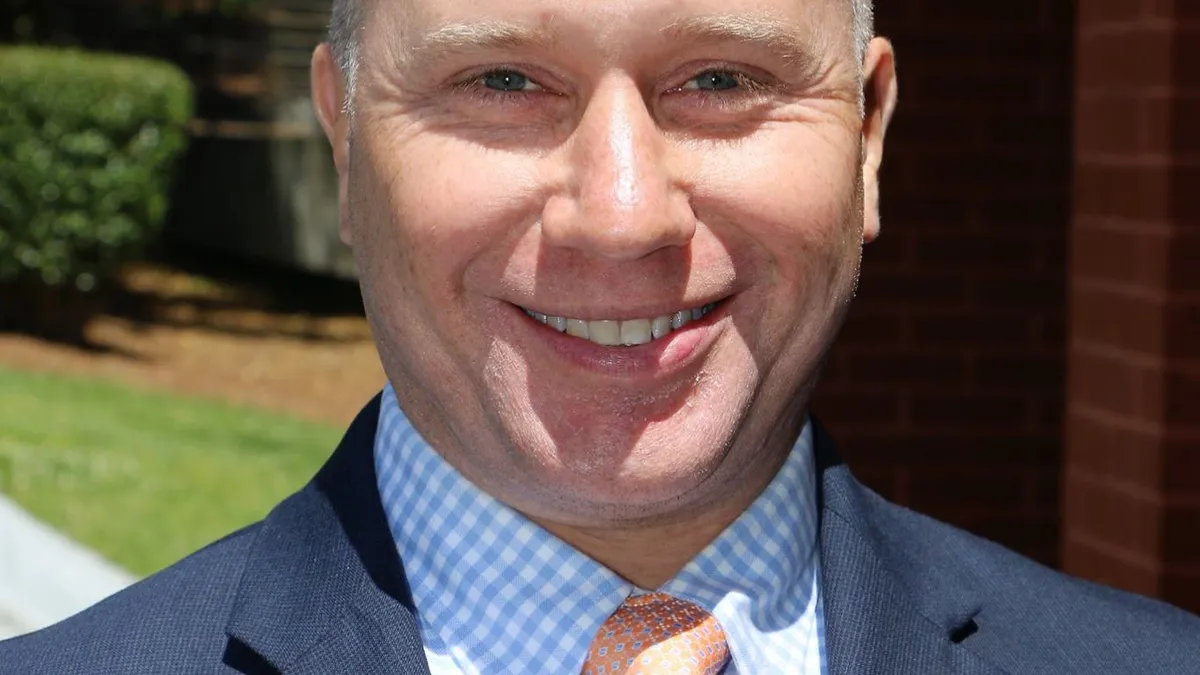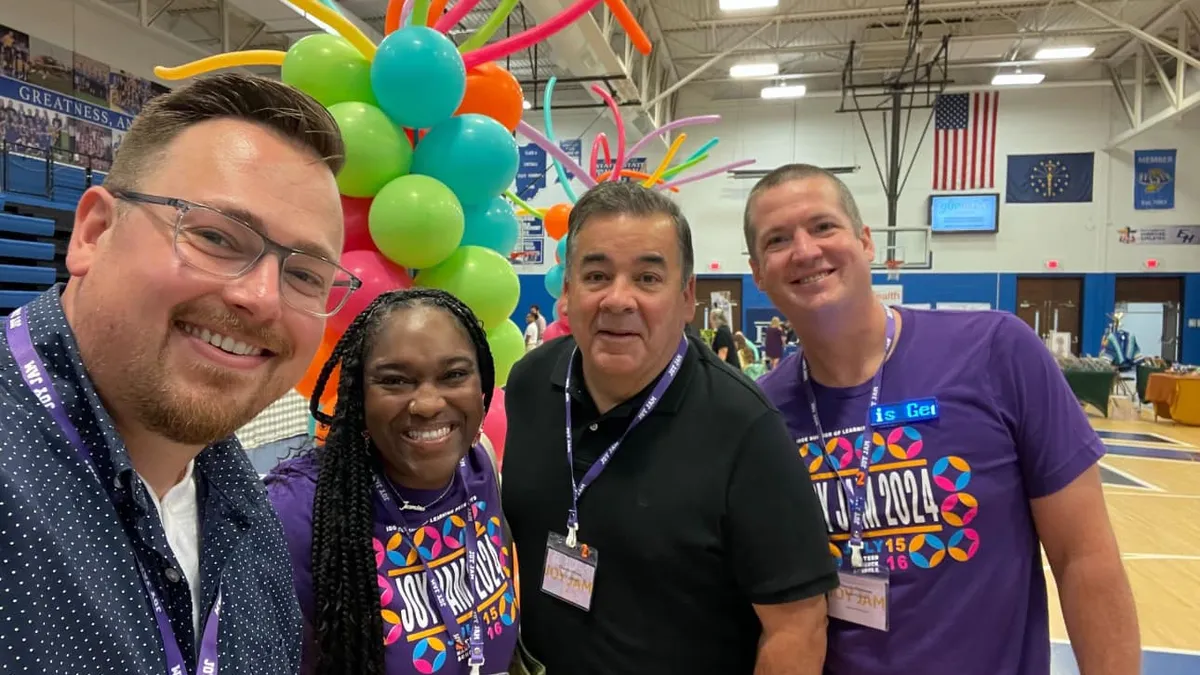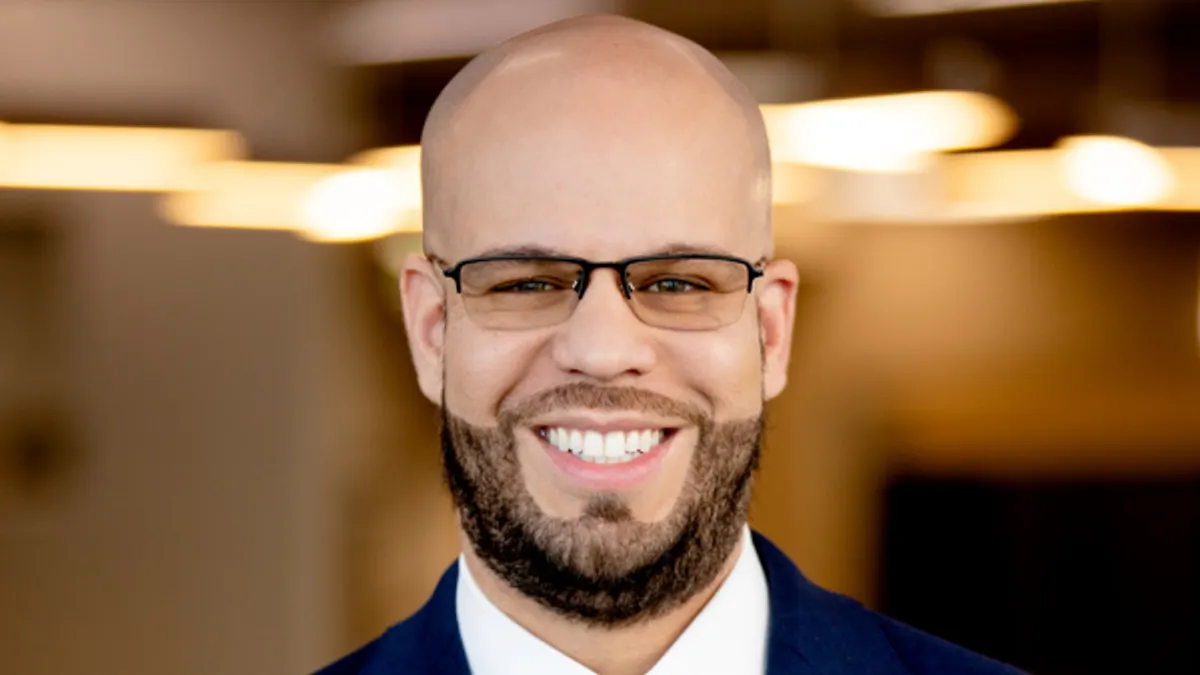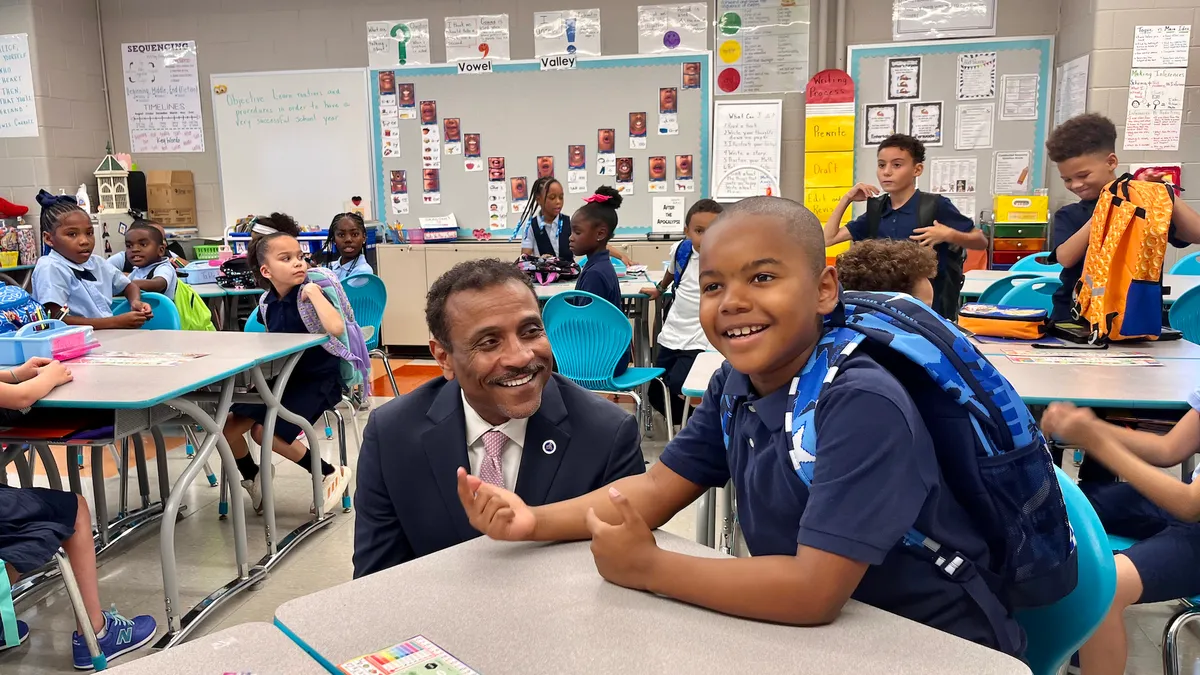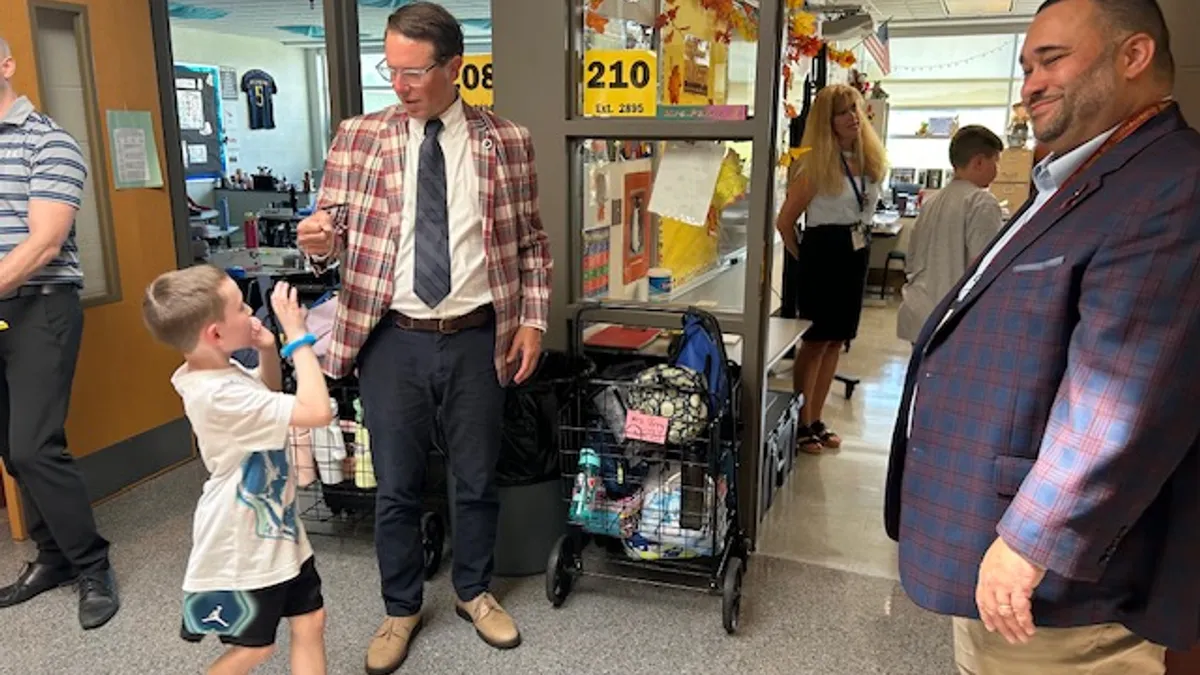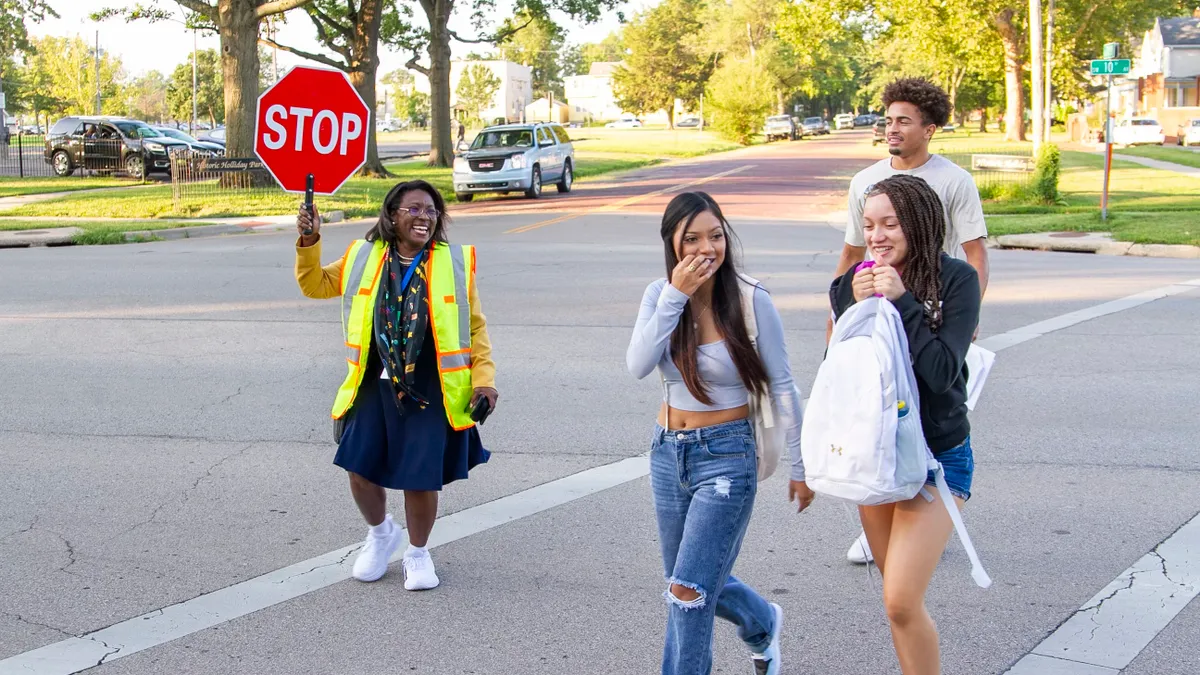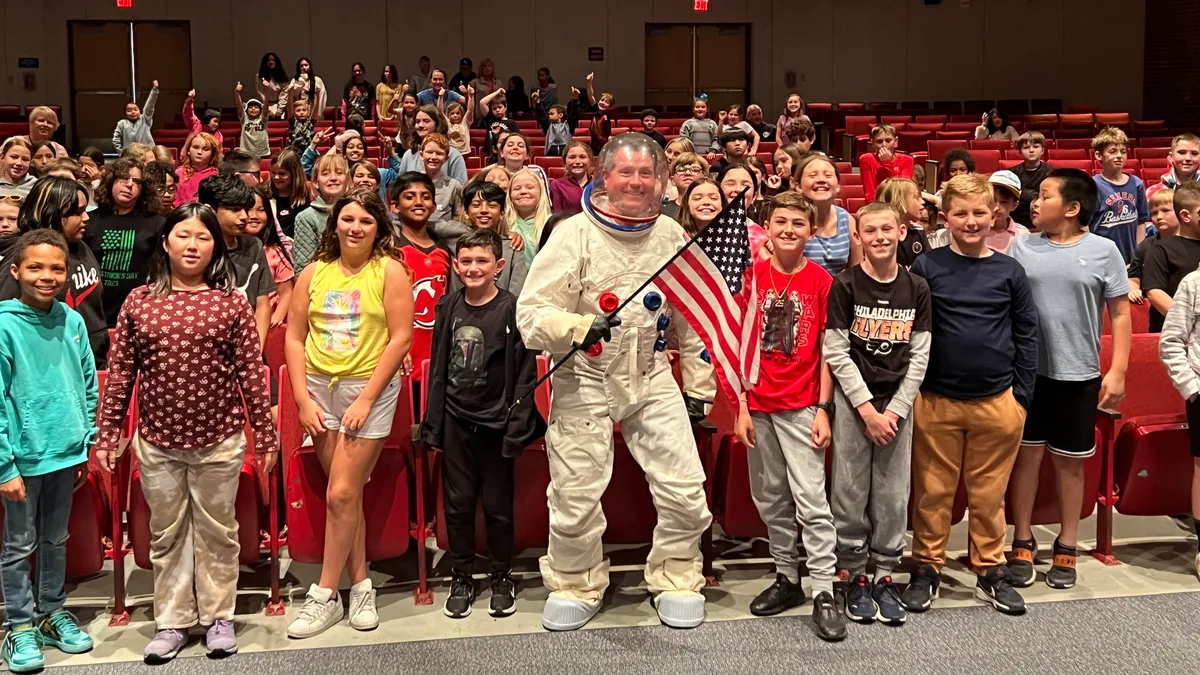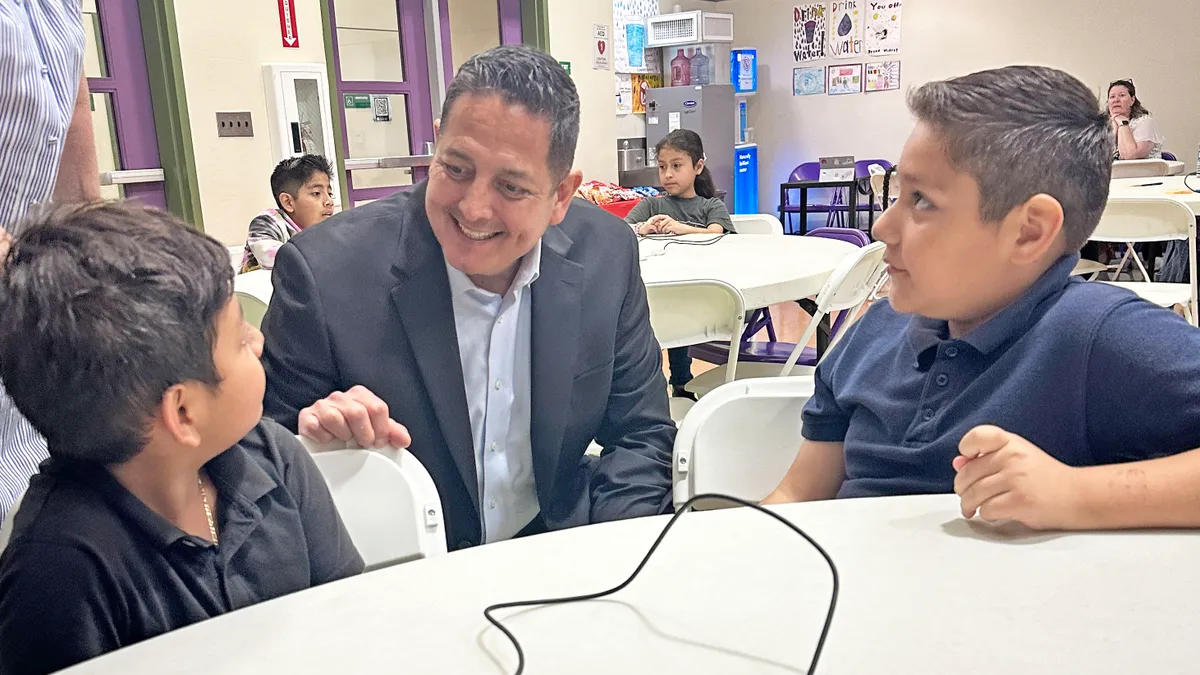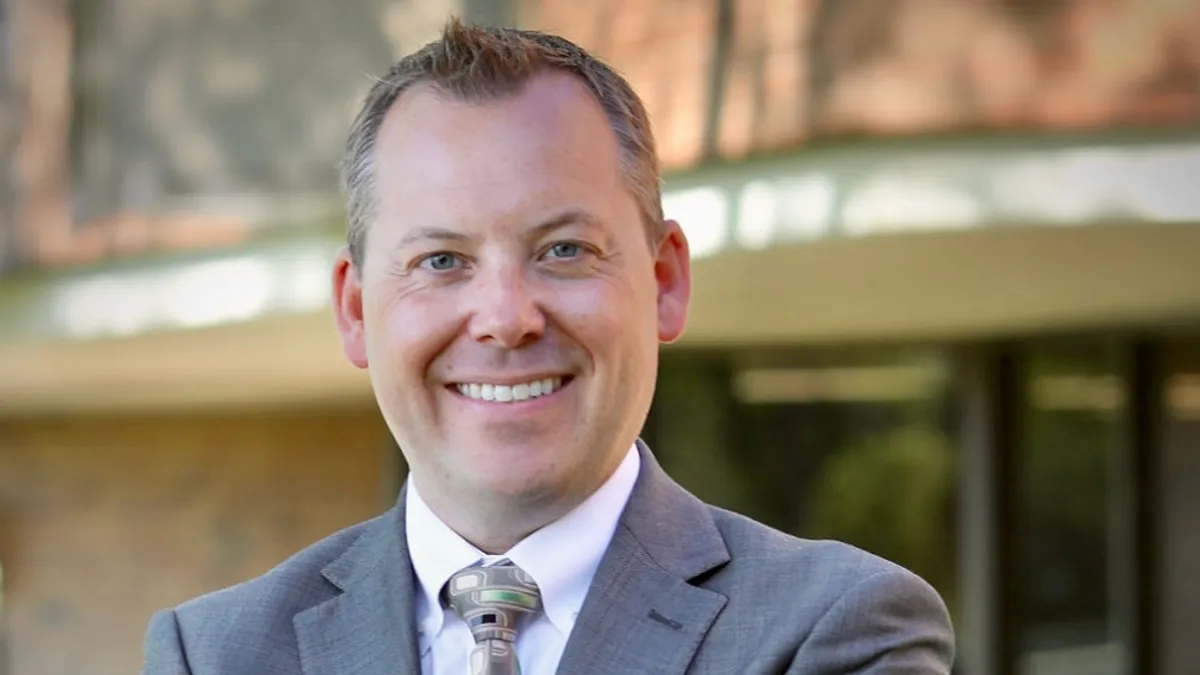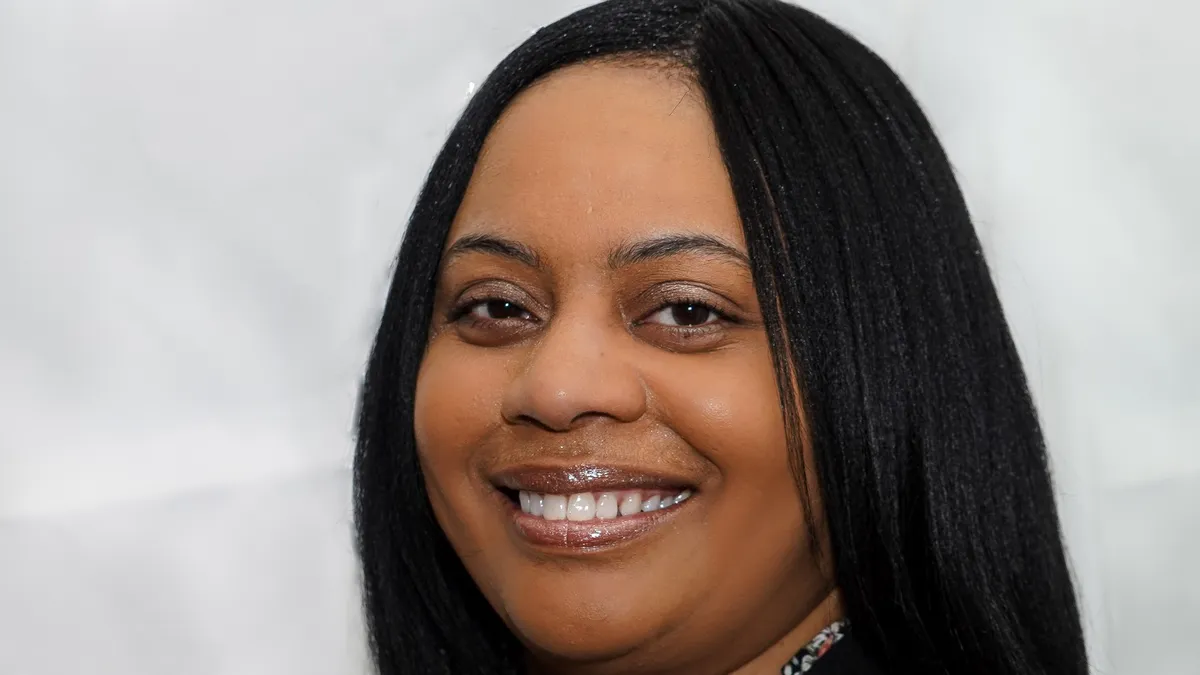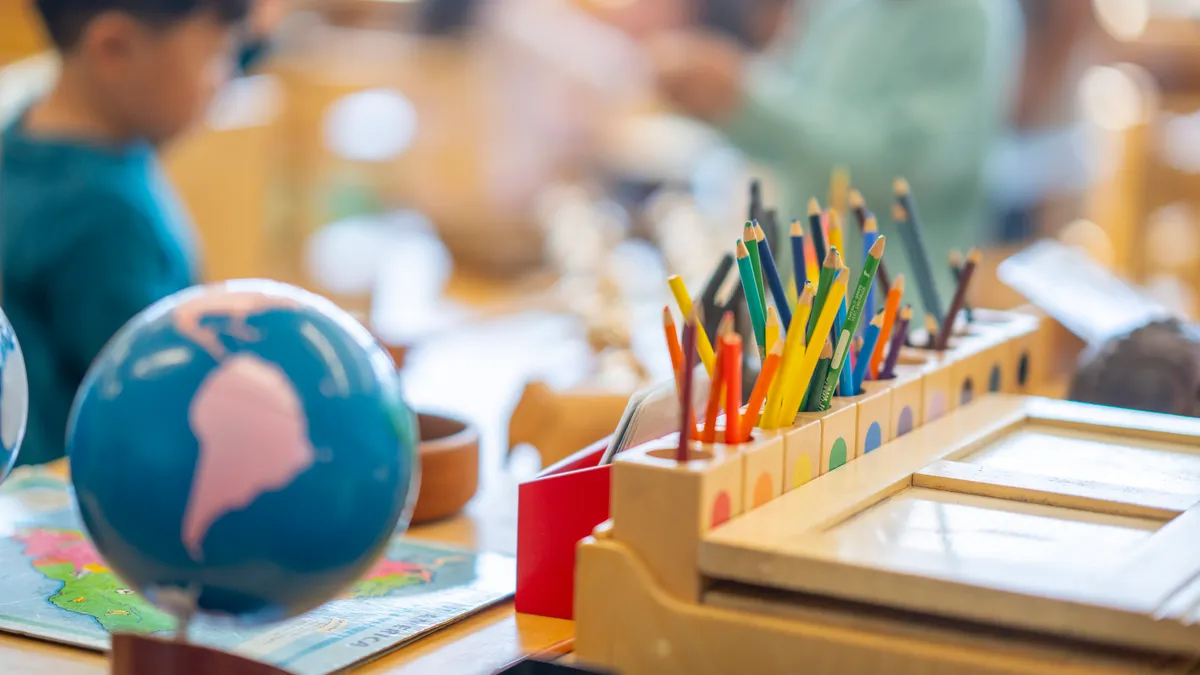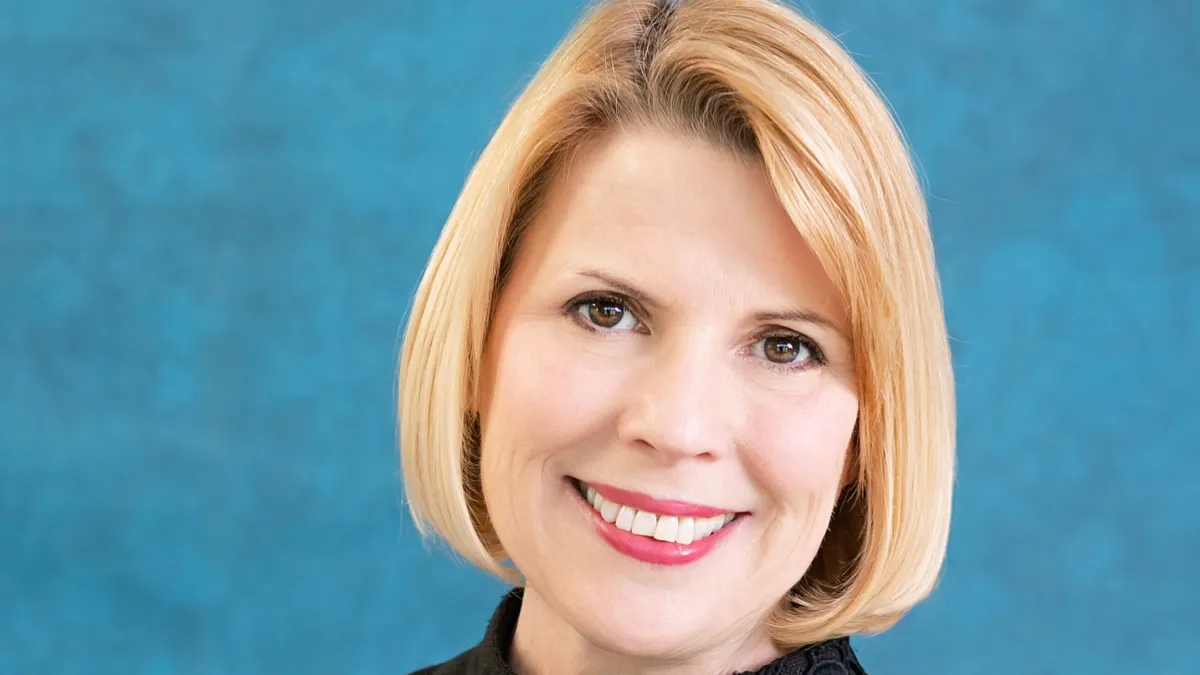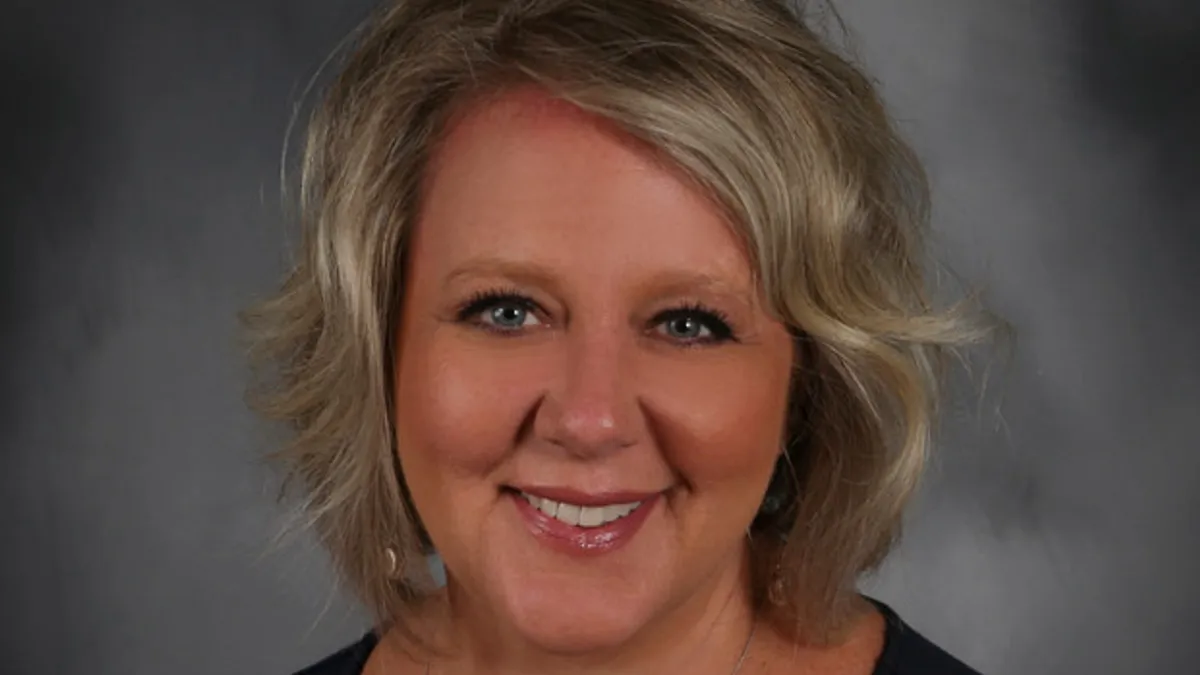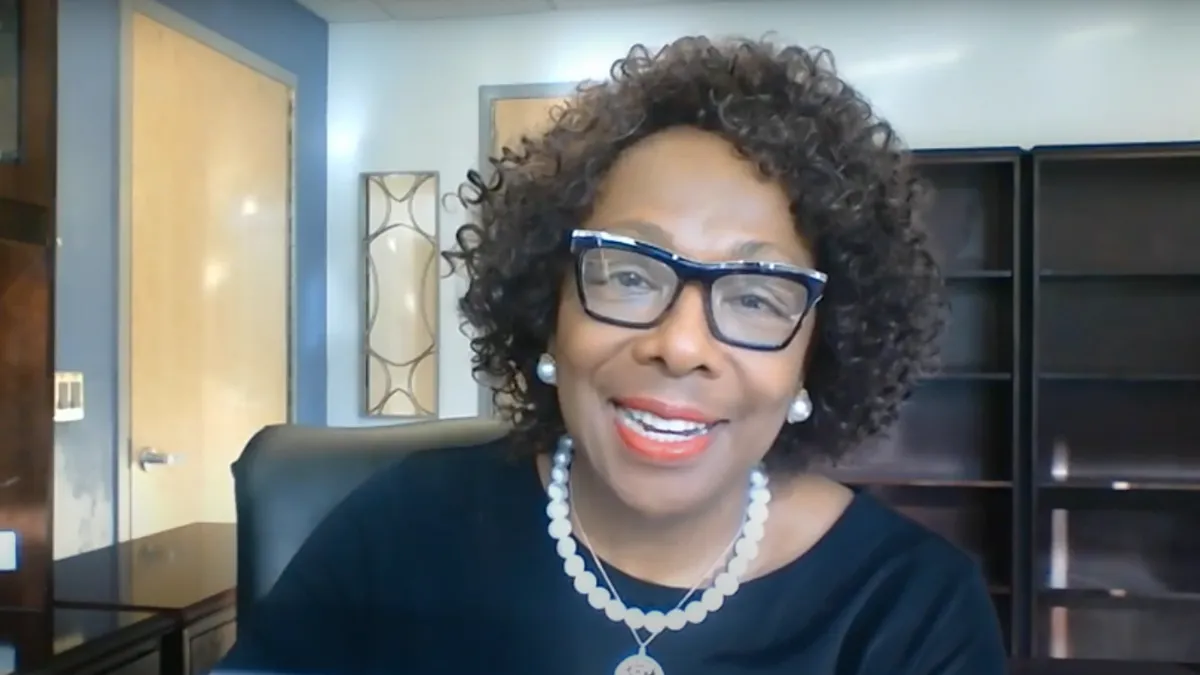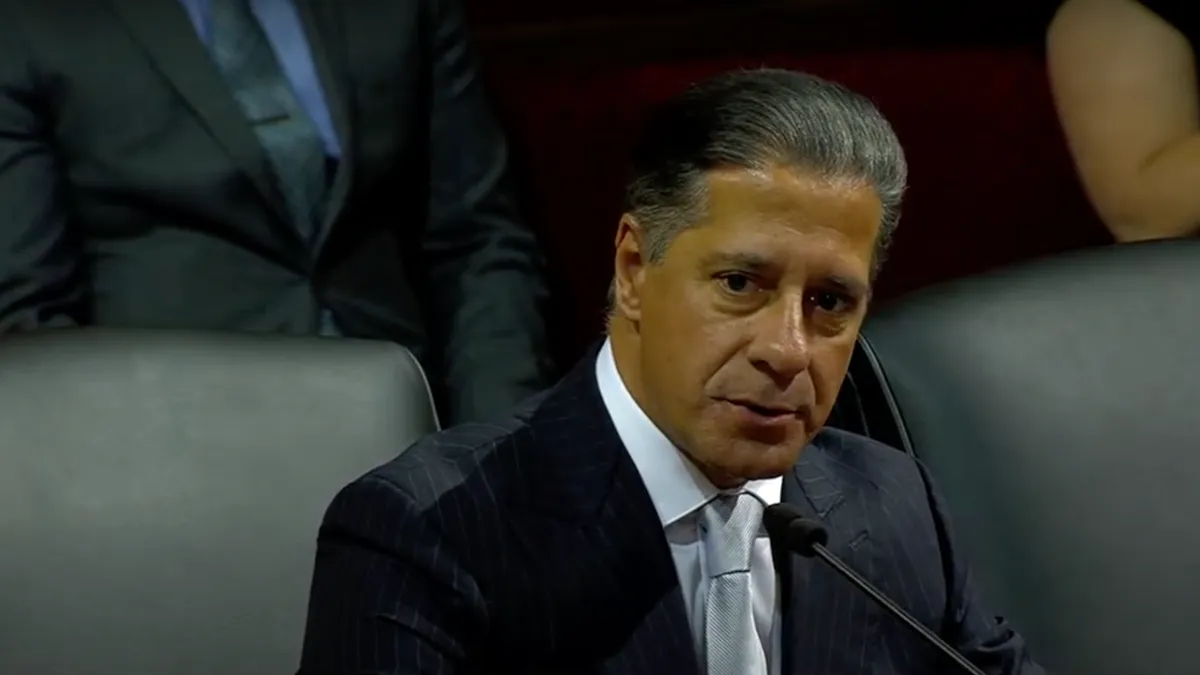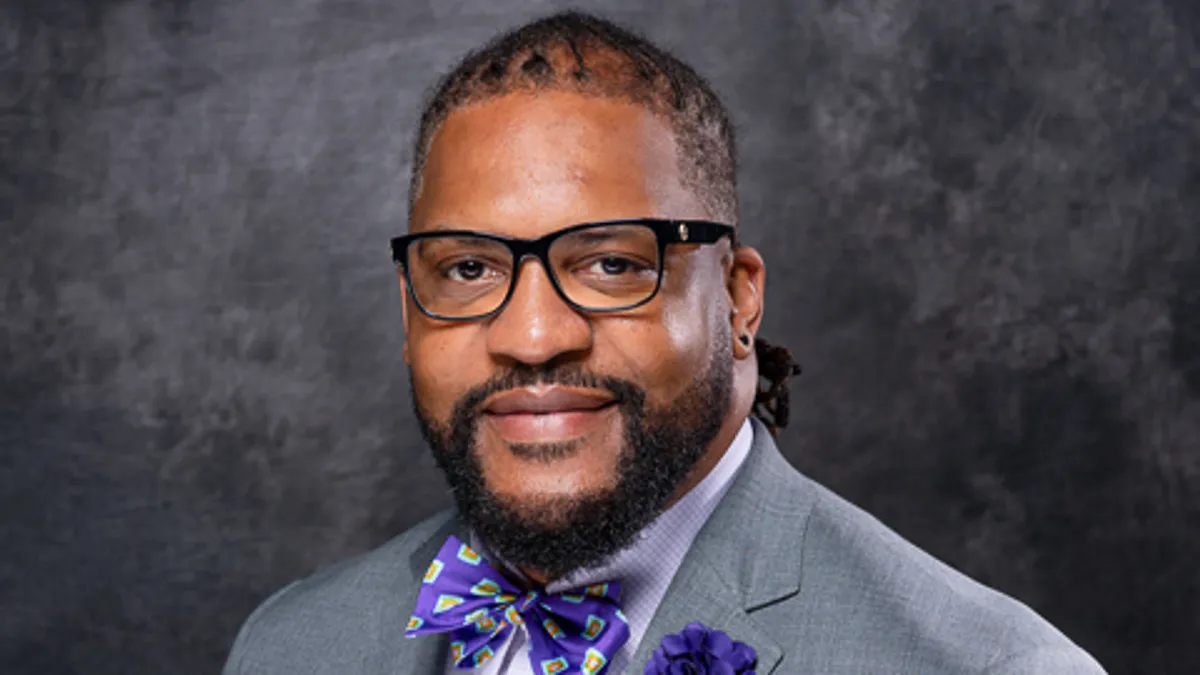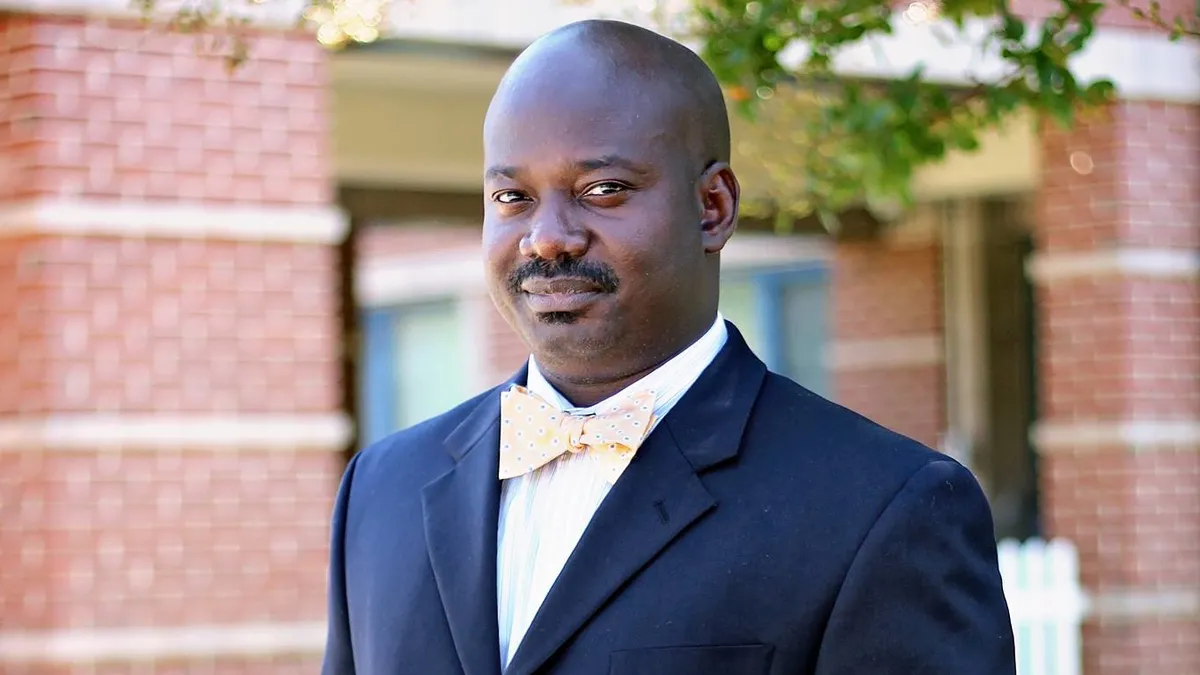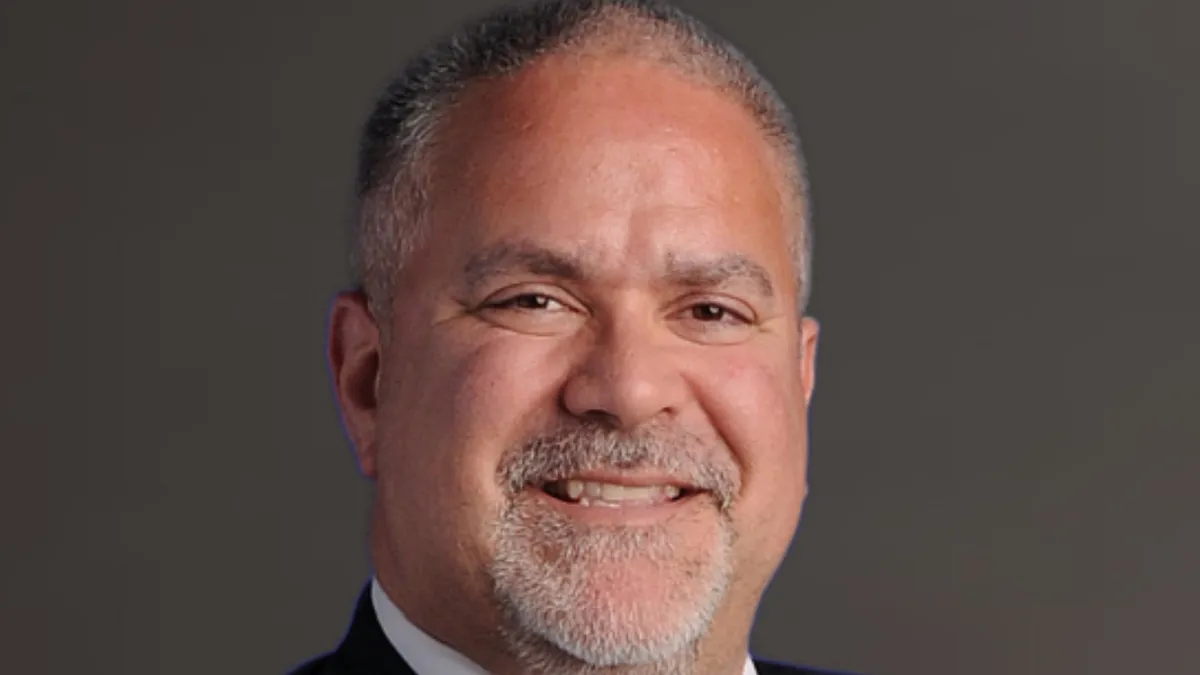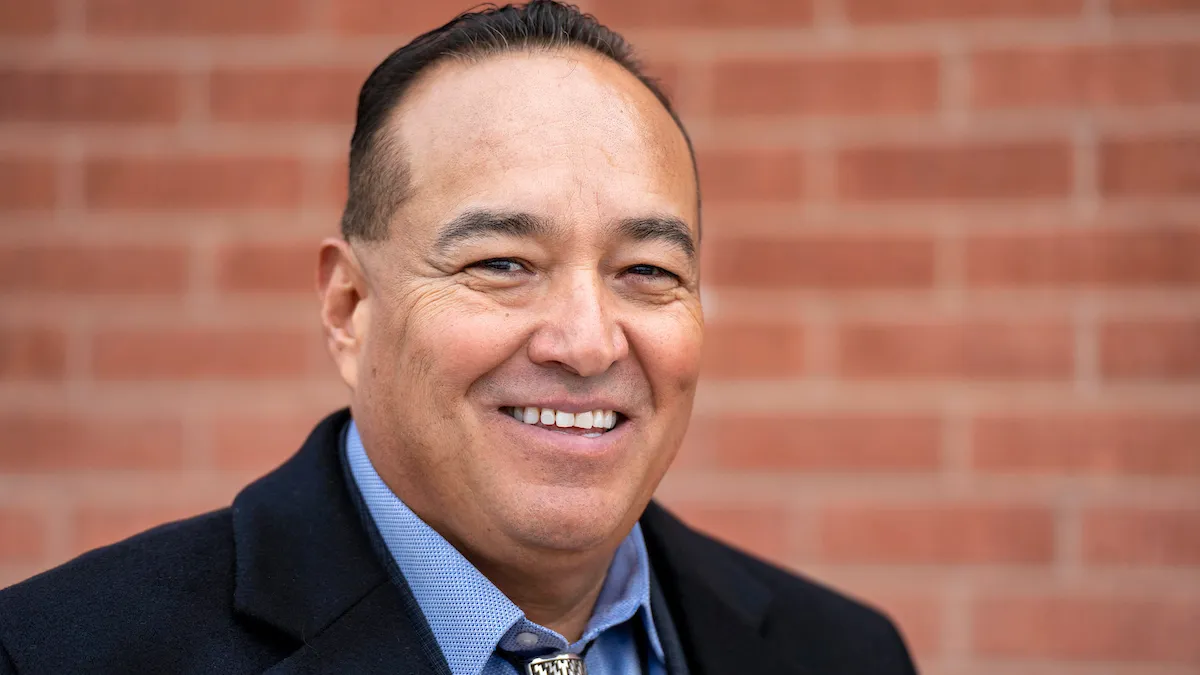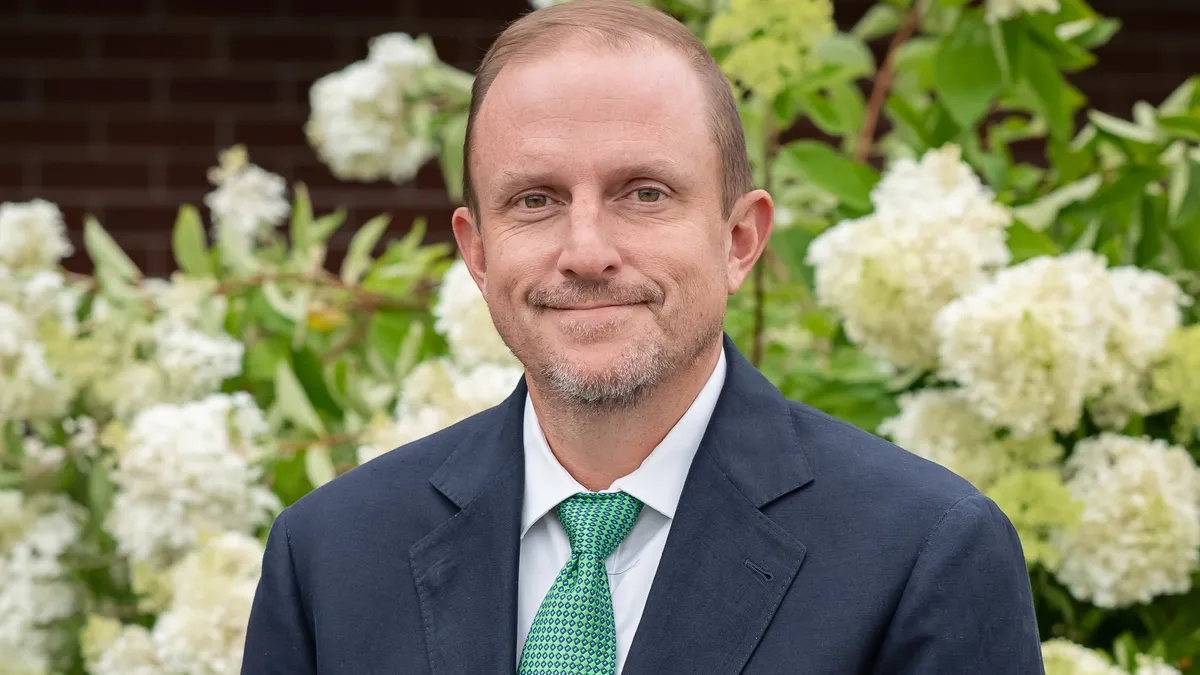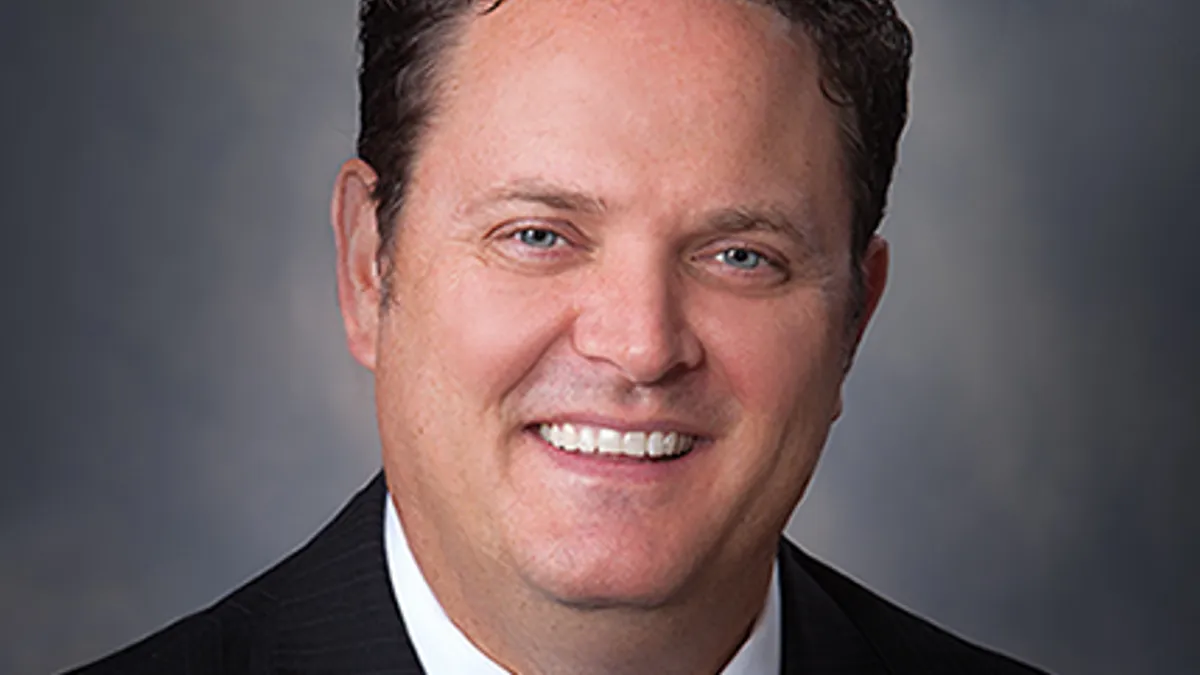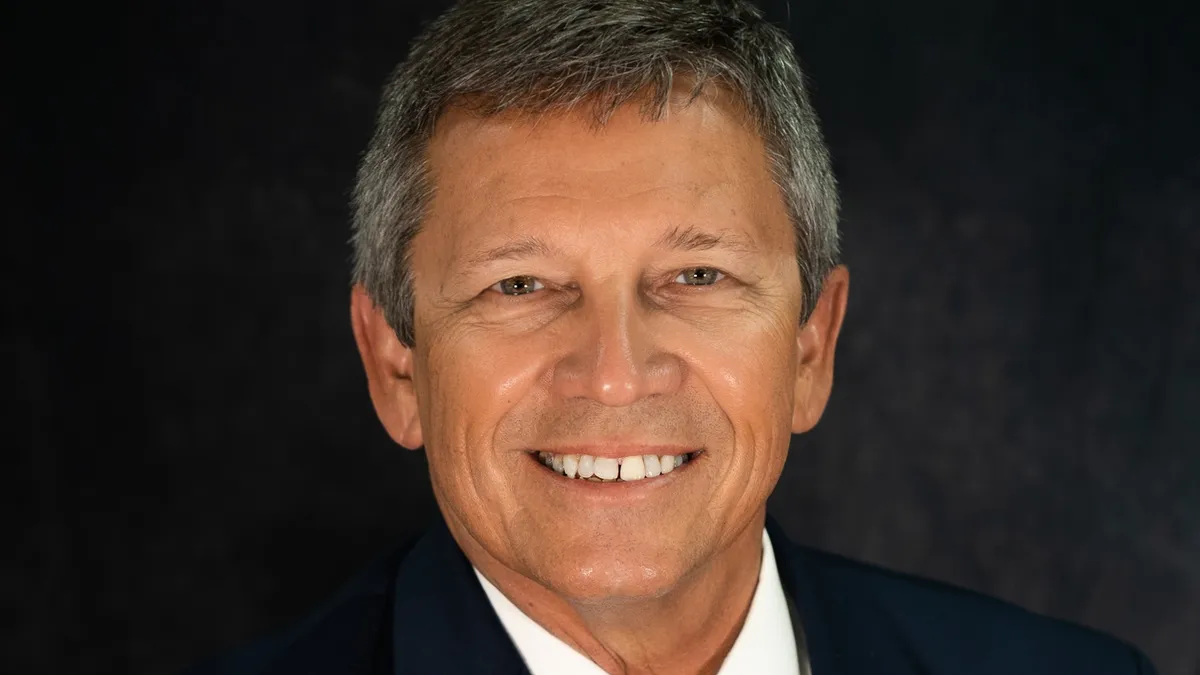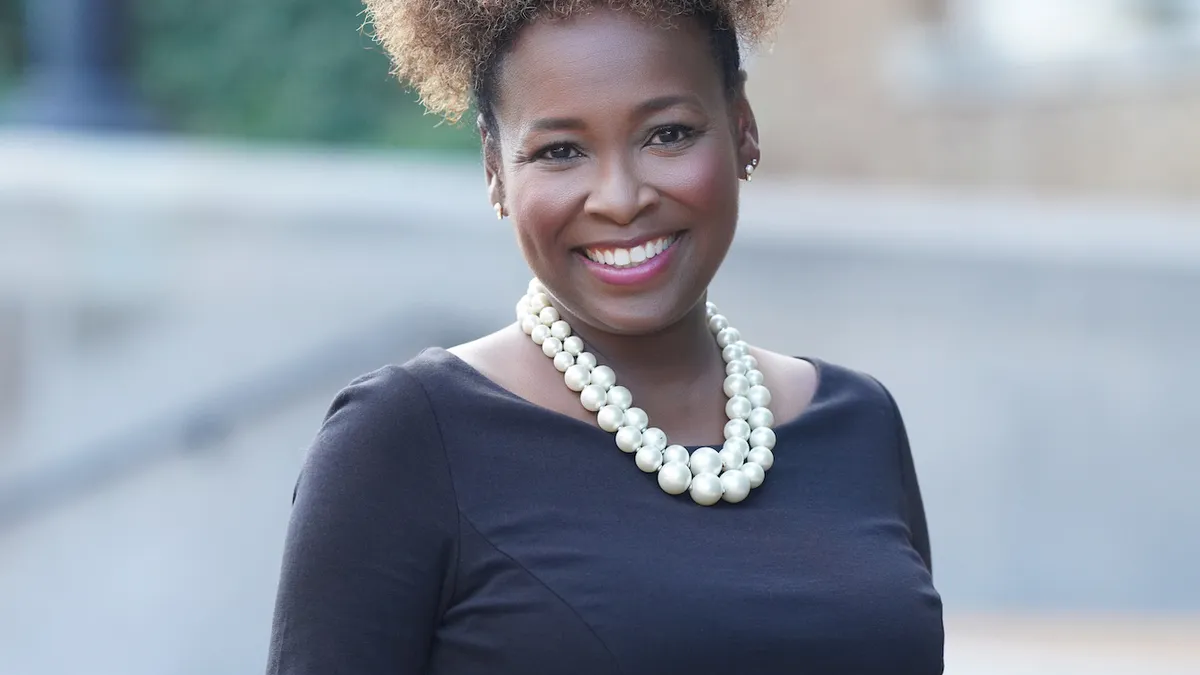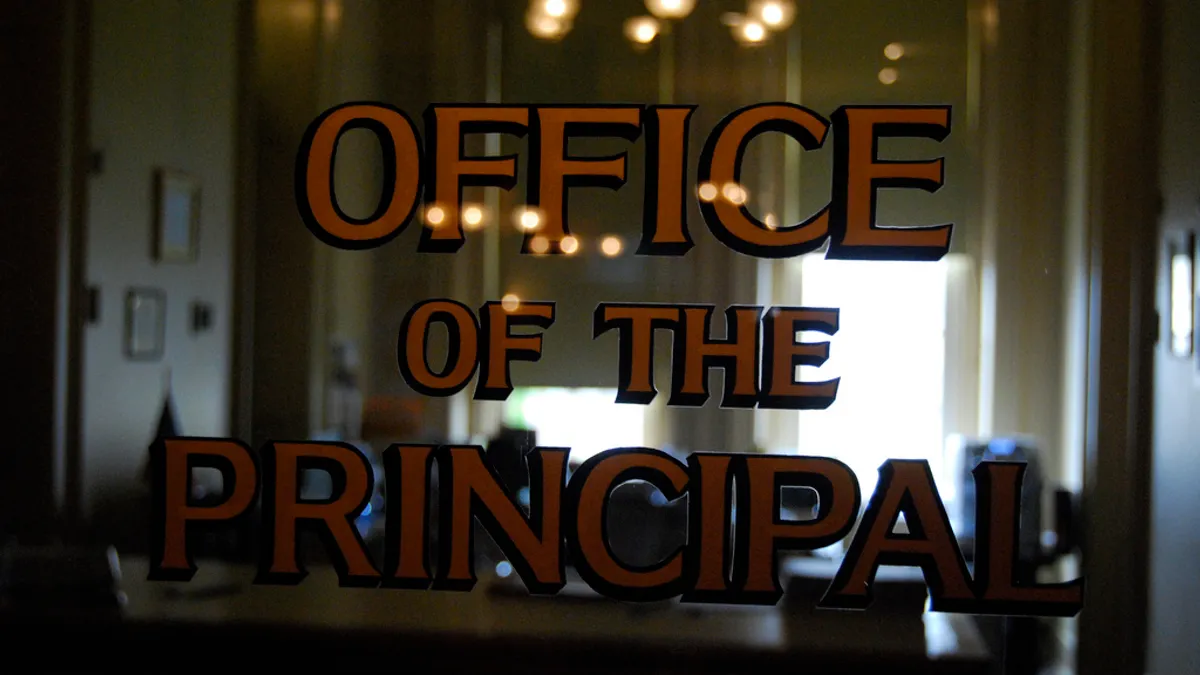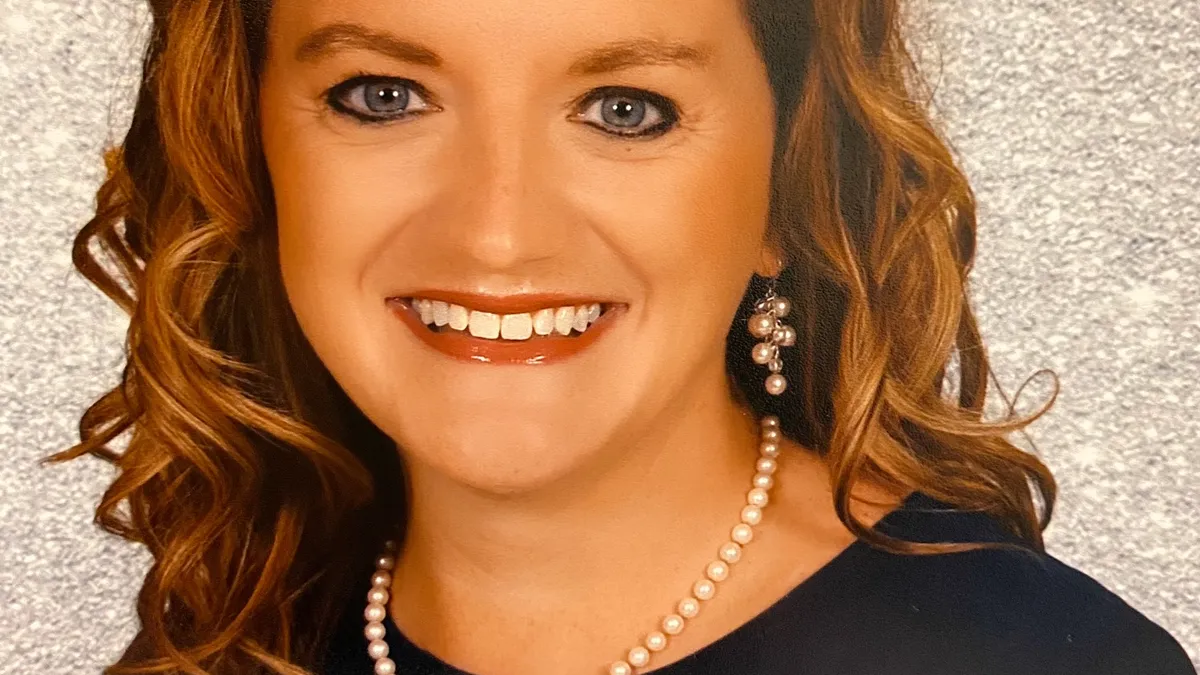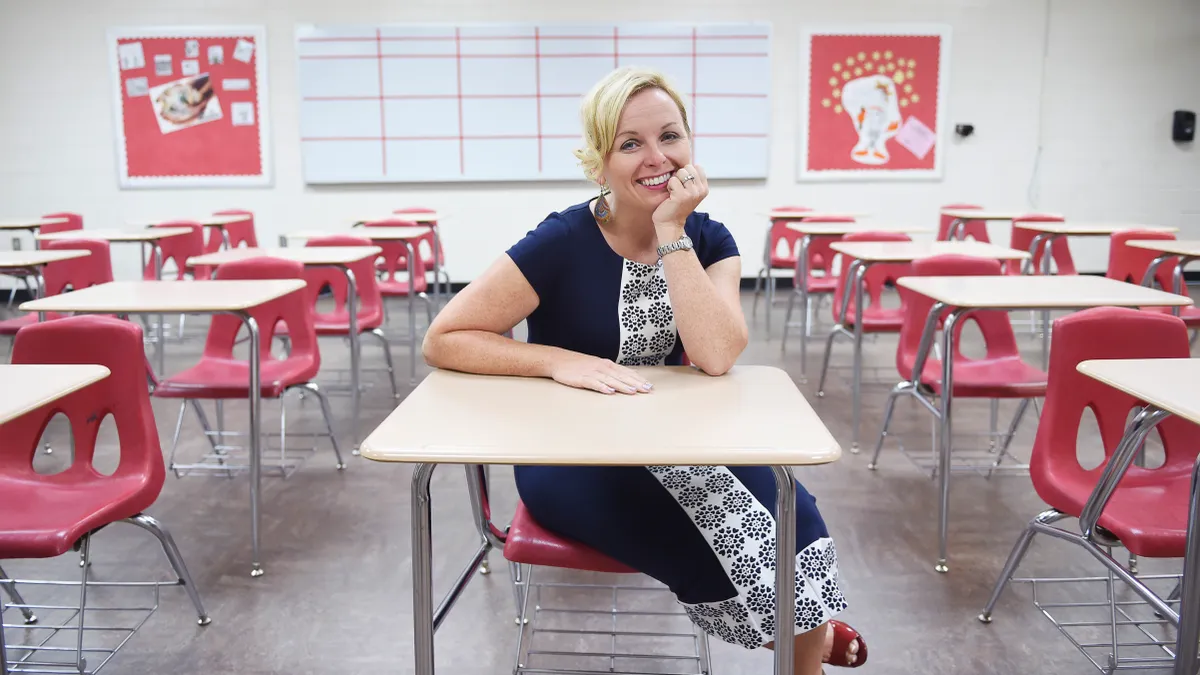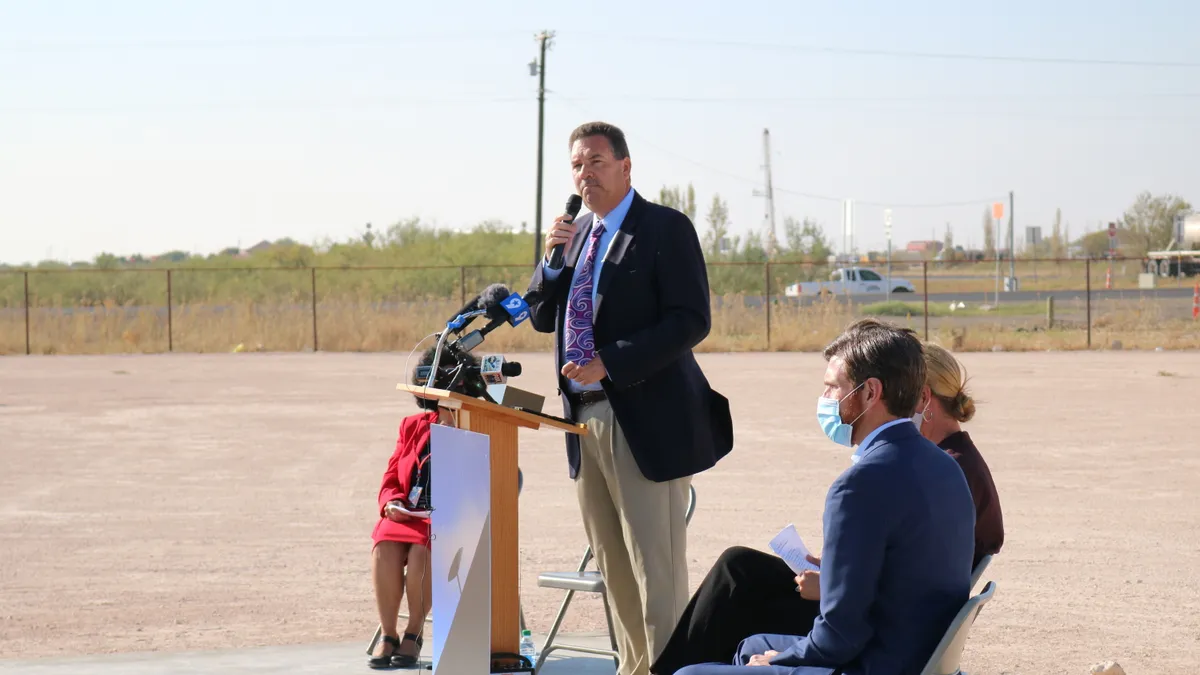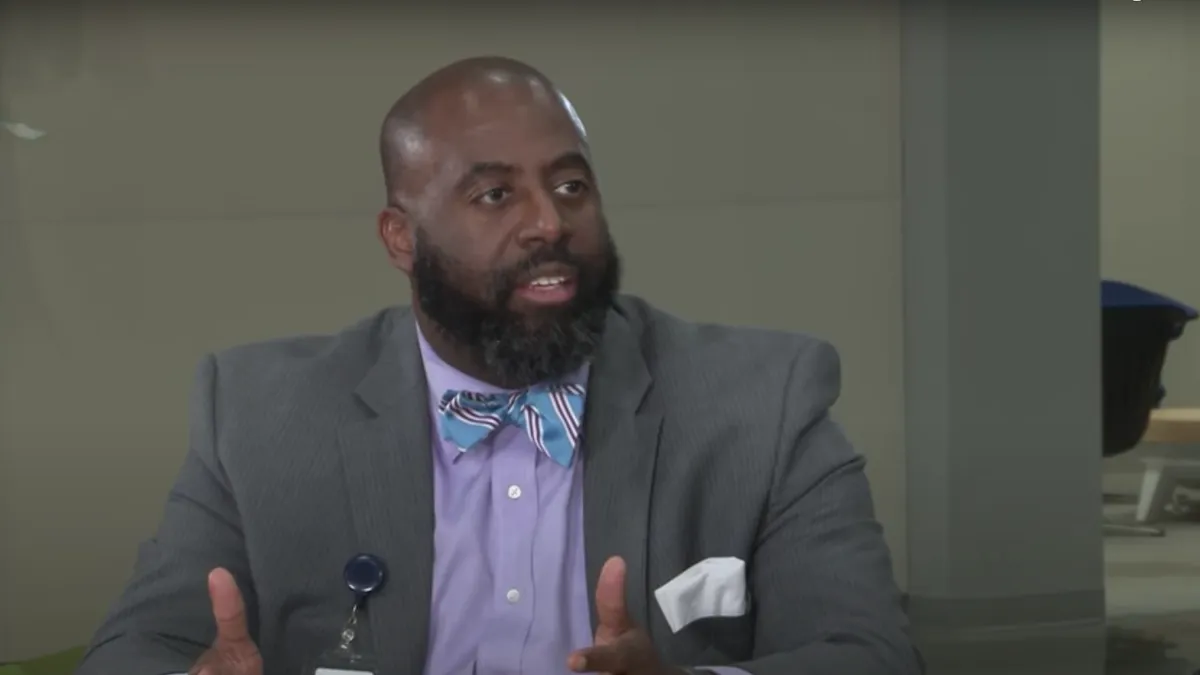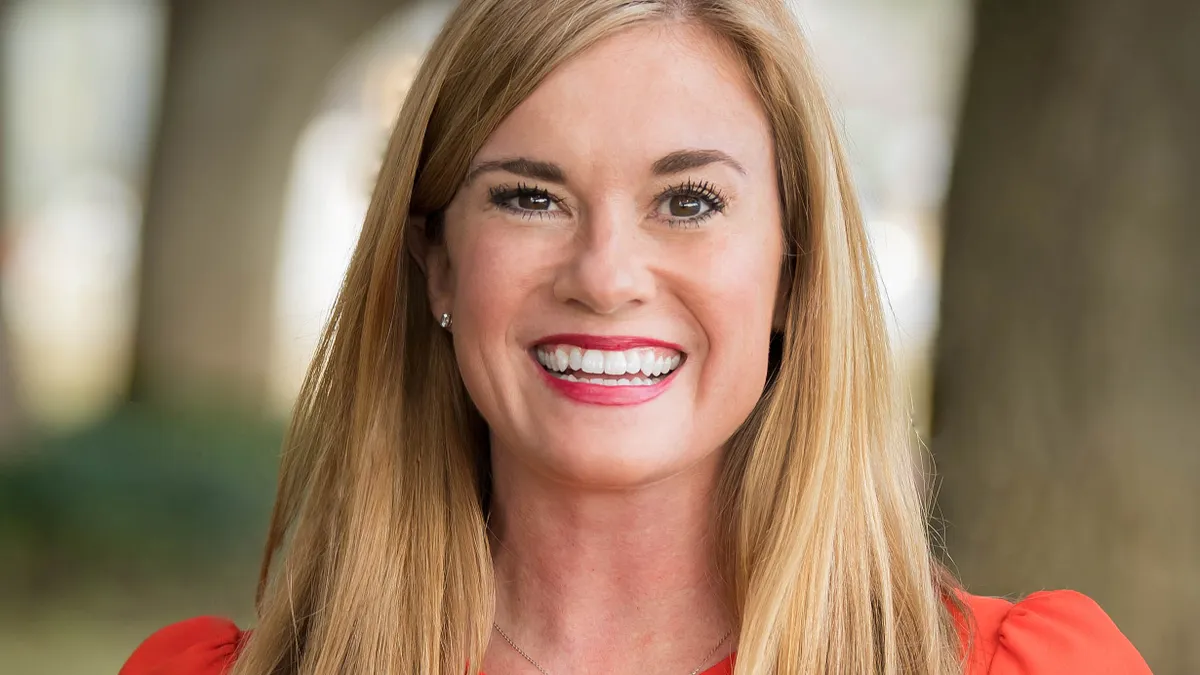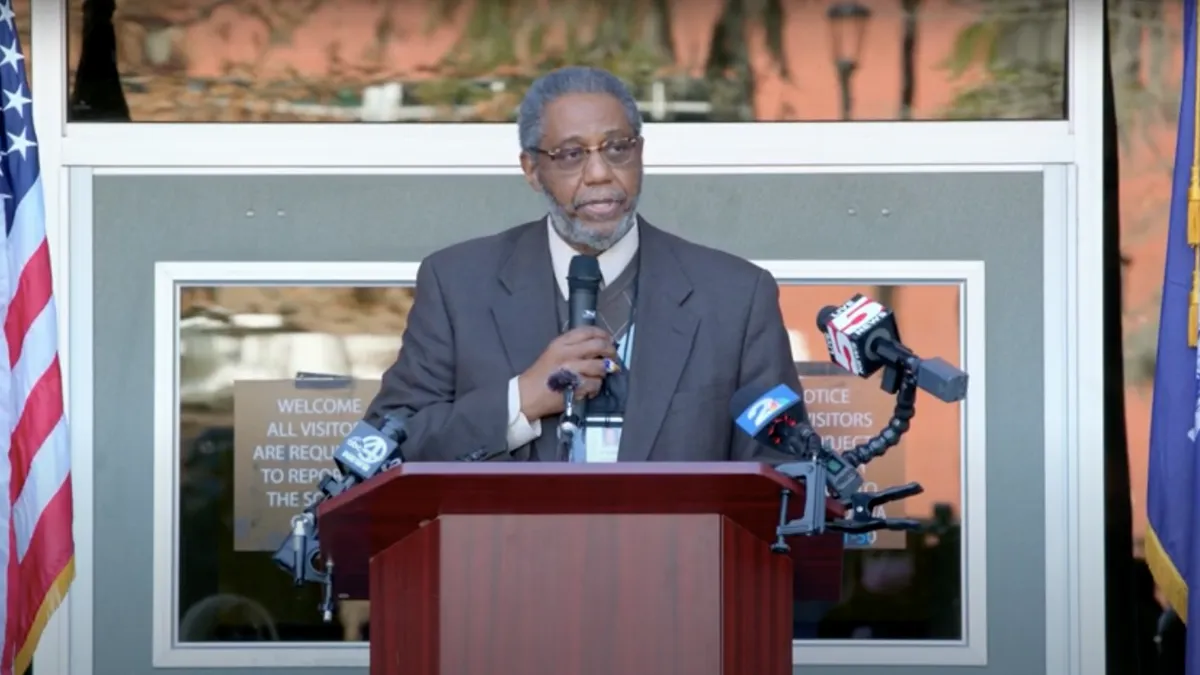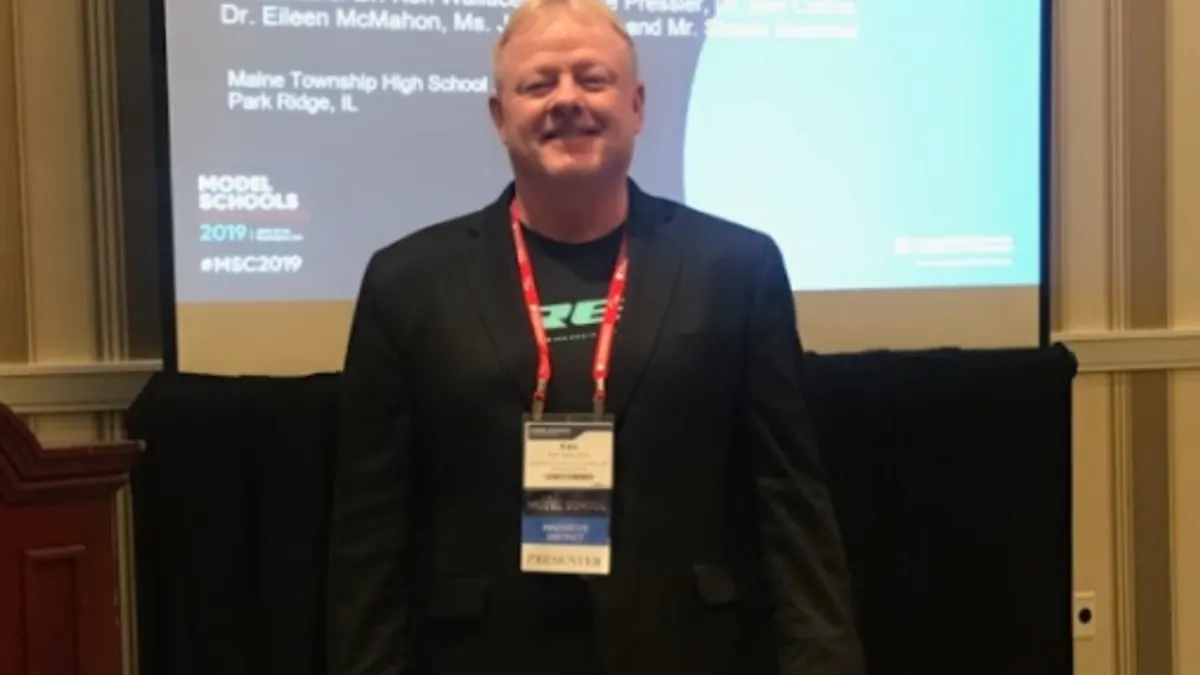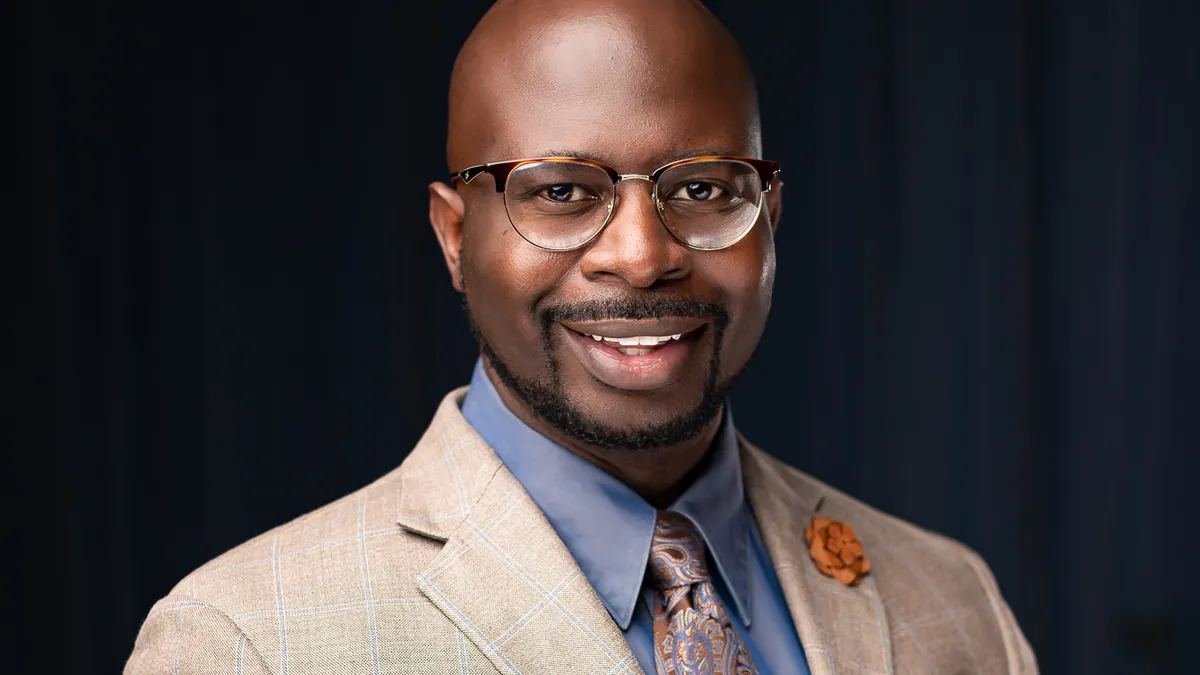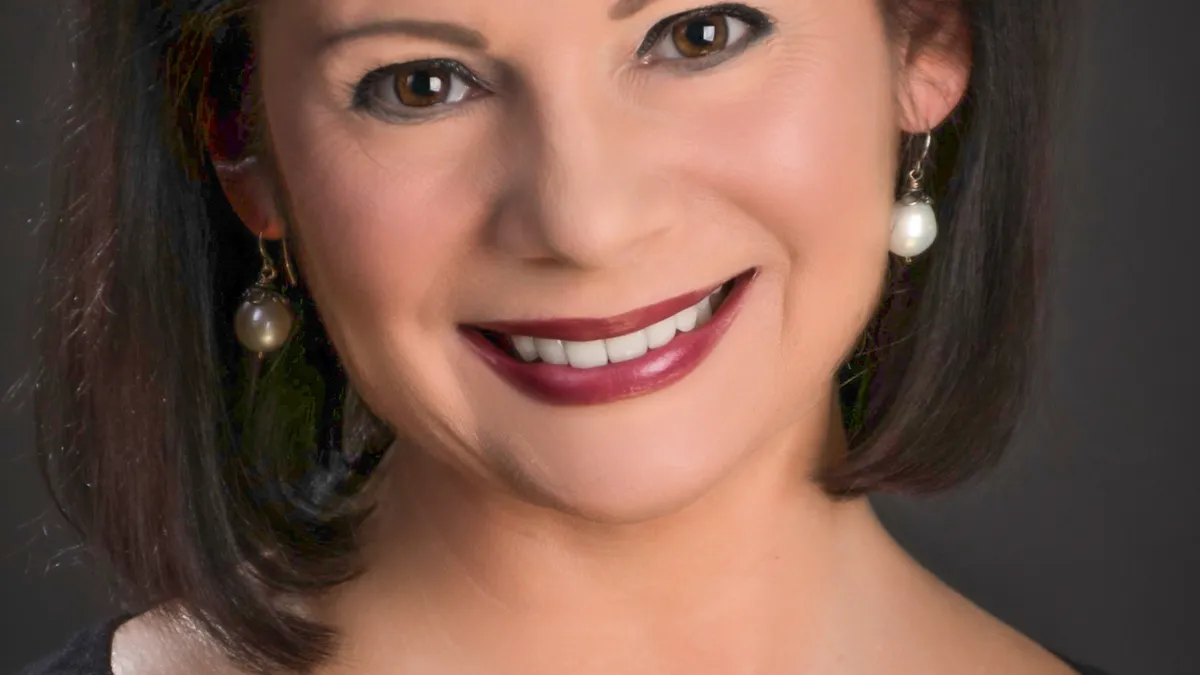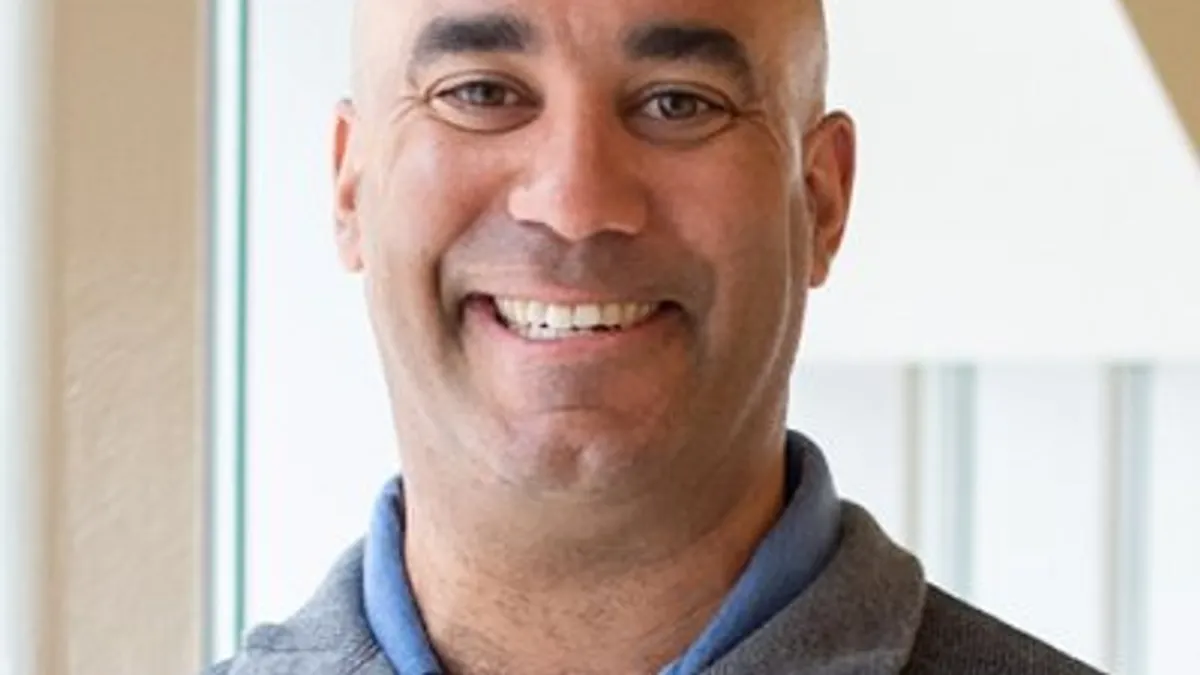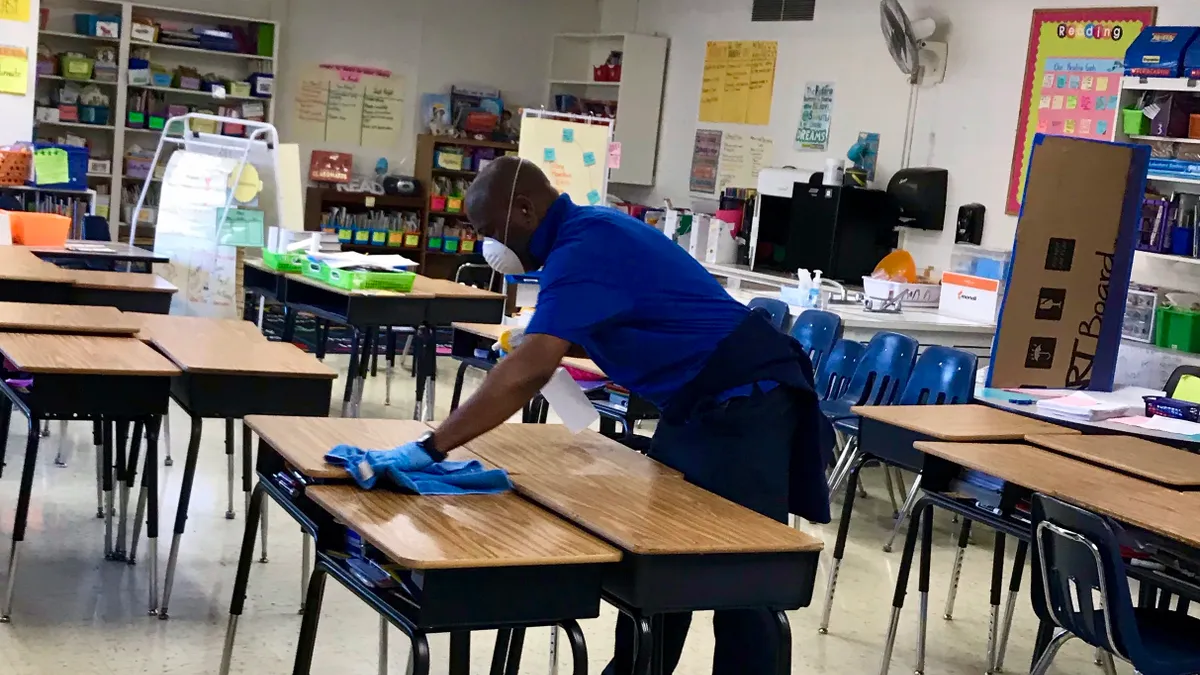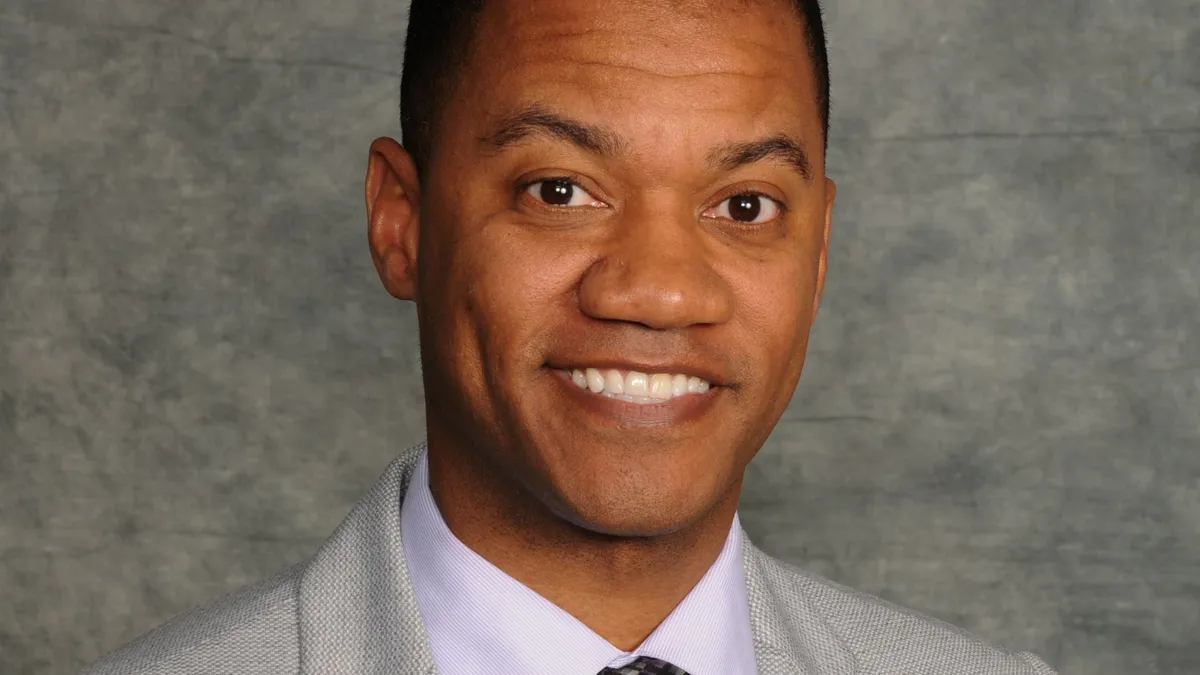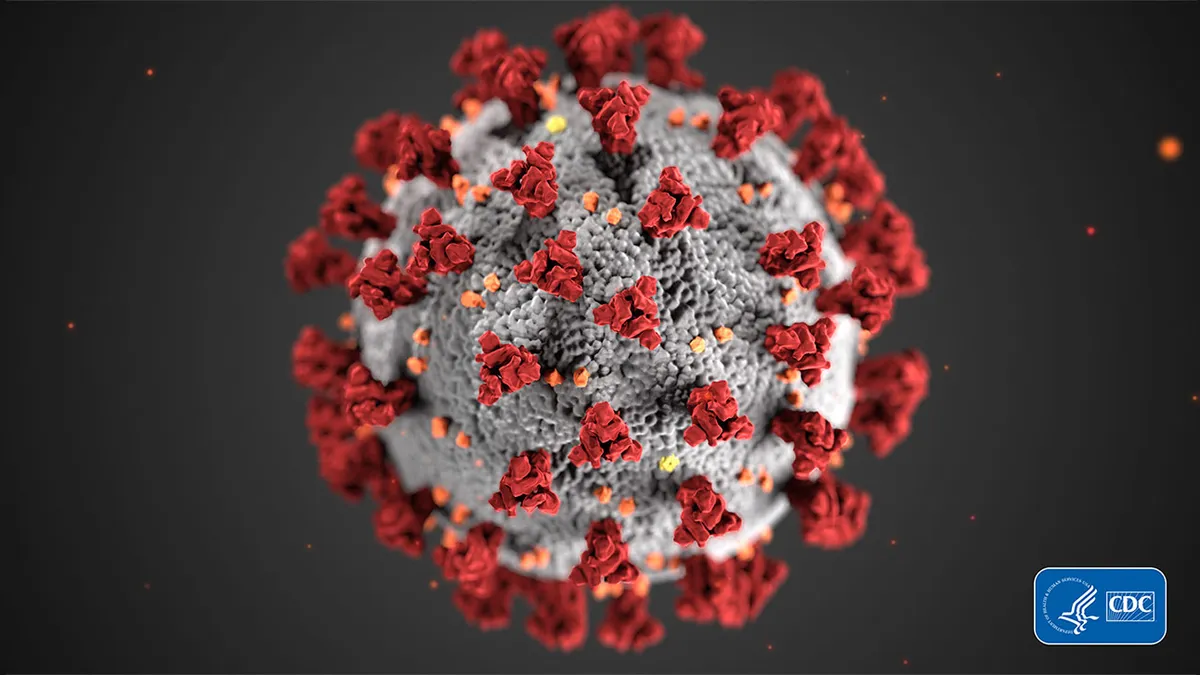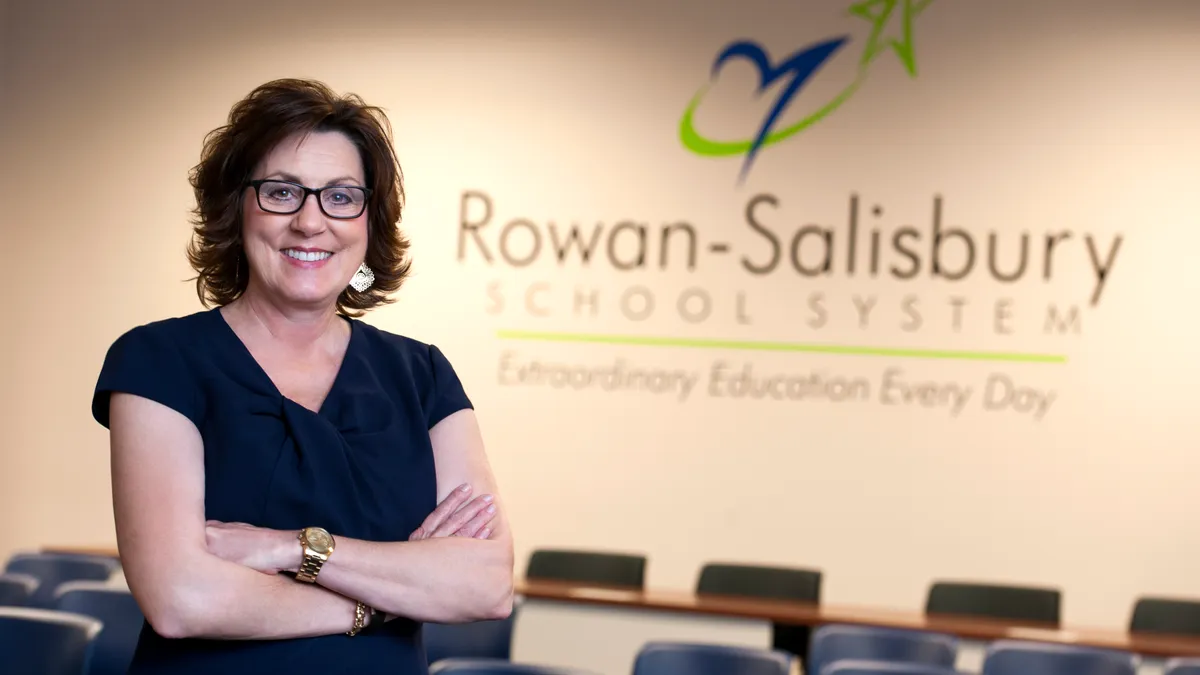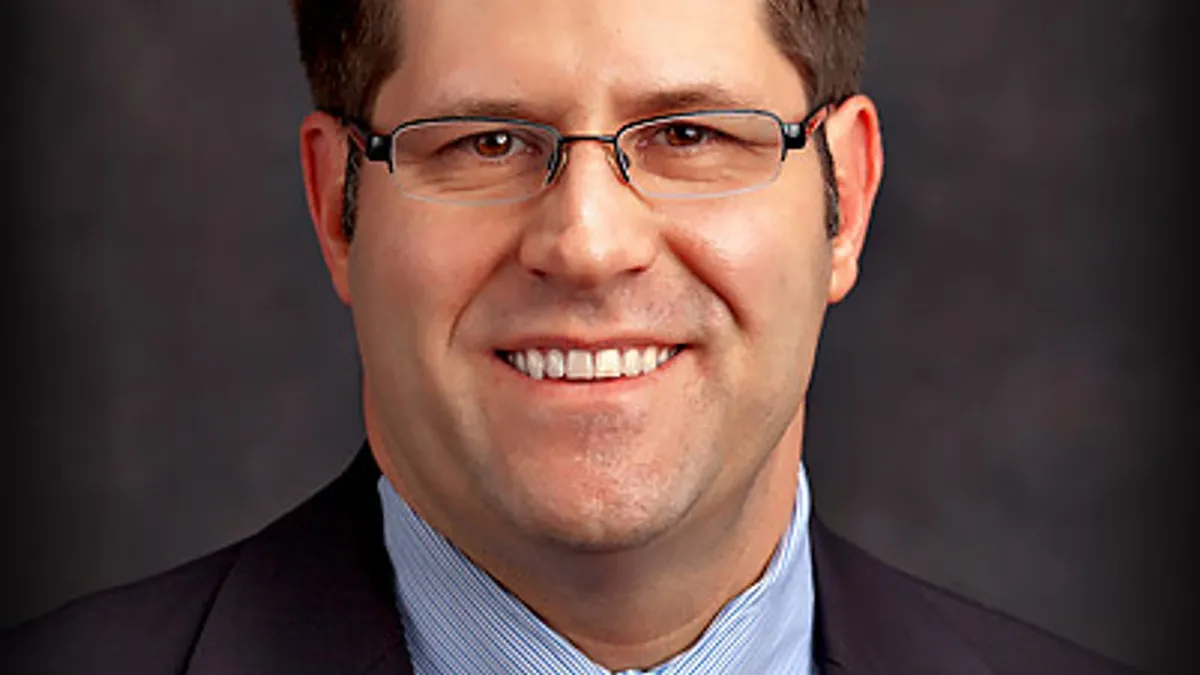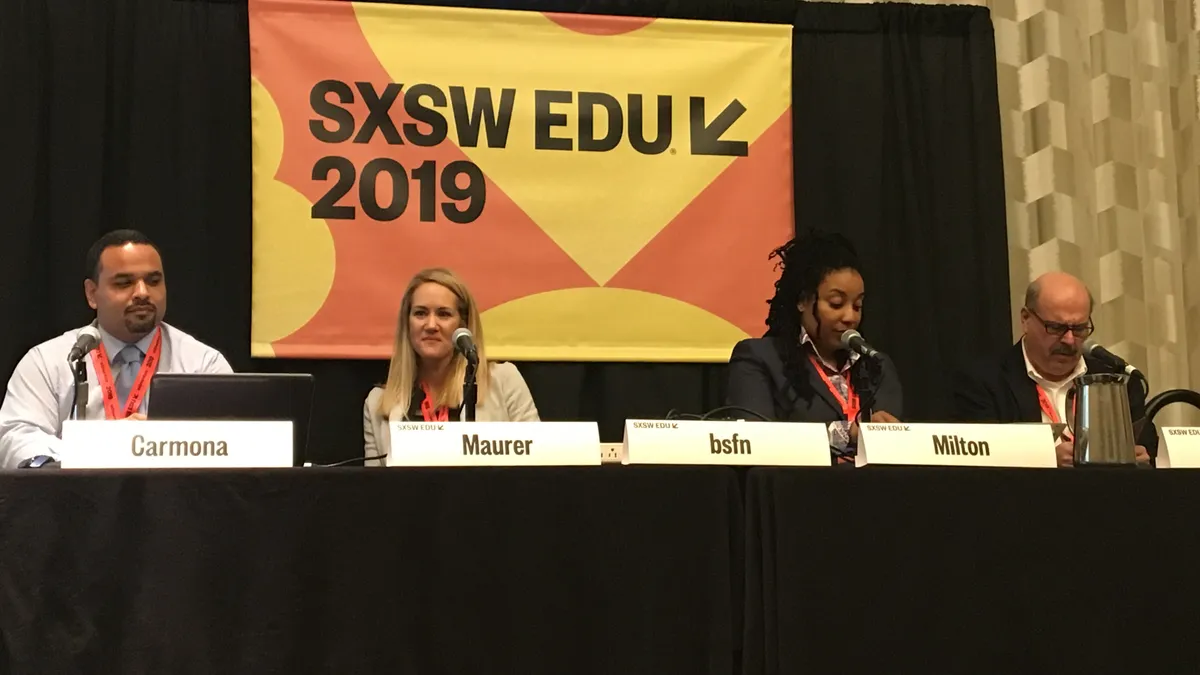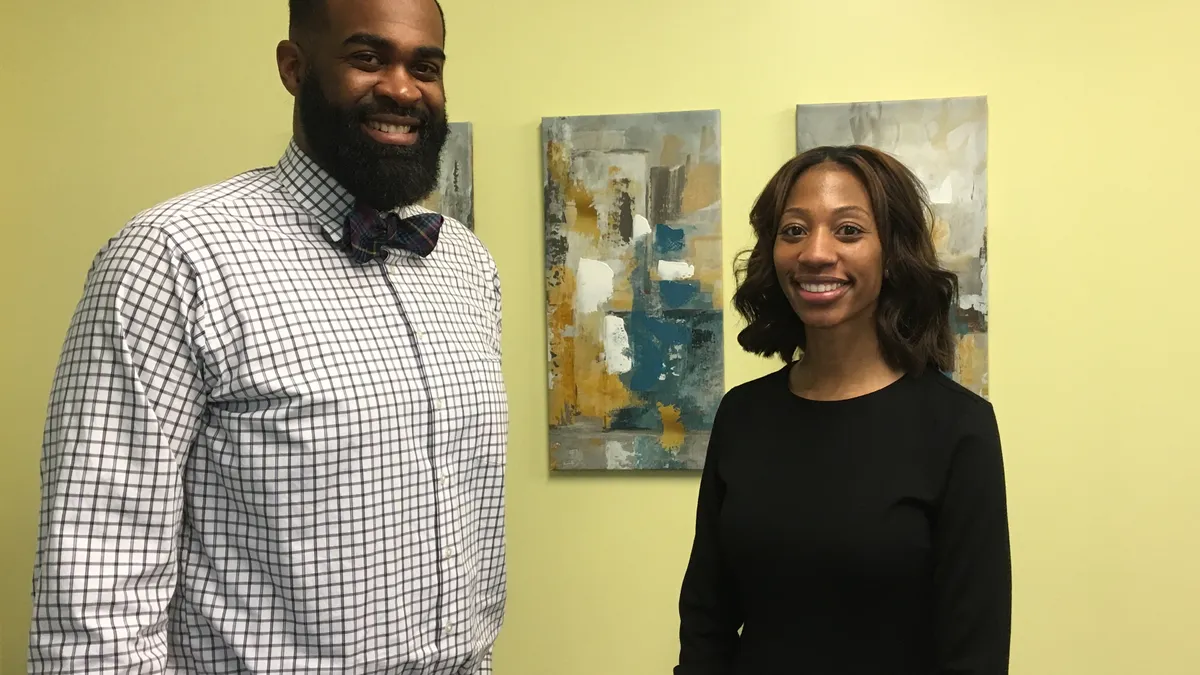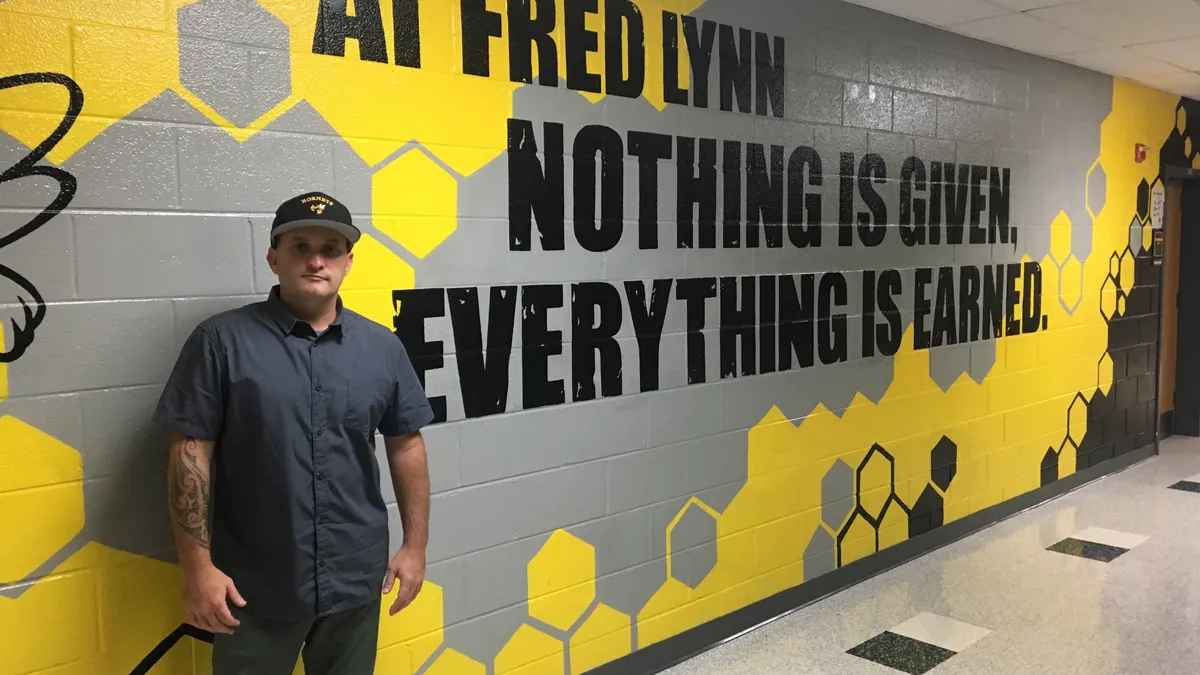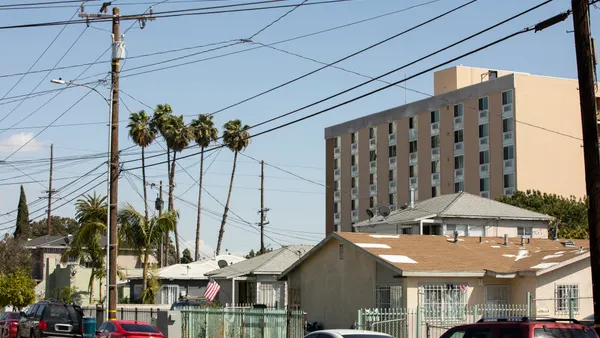Lessons In Leadership is an ongoing series in which K-12 principals and superintendents share their best practices and challenges overcome. For more installments, click here.
The Learning Policy Institute found in 2019 that 35% of principals stayed at a school for less than two years, and only 11% were at their school for 10 years or longer, resulting in a national average tenure of about four years. The duration of a leader's tenure has a significant impact on school culture, morale and, by effect, student success.
When Principal Keith Ball came to Marietta High School in Georgia in 2018, he was the fourth principal in five years for the school, which had also never met the state's graduation rate or scored higher than a "C" on the state's report card. As of 2019, the school — which has a student population 38.7% Hispanic, 37.4% African American and 52.6% on free or reduced-price lunch — had advanced to a "B" grade, and in 2020 marked its highest graduation rate in 128 years.
Ball, a 20-year education veteran who also spent time at a Wall Street think tank focused on the student loan crisis, says his school's success is as much about being a constant presence to students as any sort of logistical overhauls. Over the course of our conversation, we had an opportunity to learn more about those overhauls, his efforts to ensure focus remains on students, and the pandemic's impact on progress his school has made.
EDITOR'S NOTE: The following interview has been edited for brevity and clarity.
K-12 DIVE: What strategies have led to the success you've seen under your leadership?
KEITH BALL: The first thing I always say, when people ask me that is “everything.” It took really examining and, either tweaking in a minor standpoint or a complete overhaul, all the major tenets of what allows any business organization, school, church, private or public [entity] to kind of function. There was a significant overhaul to how we approach teaching and learning in terms of curriculum and standards-based best practices, how we designed our professional learning communities, and building a master schedule that allowed for common planning, which is usually not a present factor in a very large school.
We've got about 2,600-2,700 kiddos. I’ve got 240 staff, 198 of which are classroom teachers. It's quite a massive lift to build in purposefully designed common planning. But at the end of the day, I would really call somewhat of the nucleus and mitochondria of what allows the rest of the organization — or the cell, if you will — to function.
Finances, we completely overhauled in terms of being able to consolidate budget. So basically we were able to take federal funding and local funding and consolidate it into one budget, and then we reverse-engineered it for purposes of reporting back to federal and state agencies. But what that allowed us to do is I could get that money in the hands of my teachers, which means that those supplies got into the hands of my kiddos as fast as it possibly could without going through some pretty rigorous and laborious type of red tape.
We built an alternative school so kids were no longer going to a private, almost like a strip mall type of entity, where there really wasn't much success. There was one graduate in five years prior that actually earned a diploma in alternative school. And those are obviously for a kiddo that is the most at-risk, that has an egregious violation that they had to get, unfortunately, tribunaled for a period of time.
So we built our own alternative school with our own staff in our own facility and really tried to give some of our at-risk kids the social-emotional and academic and facility opportunities to get a path to a diploma, which has worked well.
And then, this past February, I opened a night school, Marietta Evening School Hours, affectionately known as MESH, really to address the issue that was present prior to the pandemic. And when the pandemic hit, you could no longer either pretend or just think it was not an overwhelming majority of our kids who were choosing labor over learning. They were going to work and not going to school.
That wasn't because they were trying to buy a fancy car or a cool gold chain. They were trying to support themselves and their family, primarily multiple generations of their family — grandparents, their parents and, sometimes, their own kids. So we built an evening program as another path to a diploma, as well.
From a personnel standpoint, I was fortunate enough to also hire a brand new coach who spent a lot of time doing just that and really trying to figure out what was the obstacle to the child [graduating] and getting them stage-ready for diploma. So everything from dollars and cents to personnel to logistics to bell schedules — it was quite an overhaul.
You're the fourth principal there in five years. How important is it — not just from a standpoint of implementing a change like that, but from a standpoint of having the students feel there's someone who's committed to them year after year — to have that sort of a duration of tenure and consistency?
BALL: You know, that’s probably more important — and it's very insightful and impressive that you even can see that — than all that other work I went through. I mean, all the logistical and curricular and instructional and personnel and financial parts, the kids don't necessarily see that or feel that in real-time. They do now because the systems are functioning.
The first thing they see and feel is somebody who is committed to them versus just being interested in a position. They see and feel somebody who's really working hard to try to know everybody's name, and I'm trying to be at every event I could possibly be at and try to figure out who they are as human beings and what their passions are and what their problems are and what they care about or what they don't care about.
That means everything to most of us as human beings, but as a kid, especially in high school, it is probably the most important thing besides basic human needs of food and shelter and clothing — that somebody you go to every single day is present and cares and is working as hard as they possibly can for you.
I wasn't here before to understand or cast judgment on the climate or the culture, but kids get a renter's mentality that, you know, “This too shall pass” or “This person will come and go.” And I felt that coming in here. I wouldn't say I was easily accepted, because there was a lack of trust that I was just another one that was going to go through this process and then leave for greener pastures or leave for whatever reason.
I'll tell you right now that the kids absolutely appreciate and are willing to work that much harder, and sometimes tow the line that much more, because they know I’ve got their back and I believe in them. It doesn't mean I don't hold them accountable, and I do what I’ve gotta do to make sure they're doing the right thing, but they know that I'm here to get it done, and I'm here for them, and I'm not gonna leave them in the lurch.
When it comes to ensuring students and educators have a more meaningful voice in the school leadership process, what are some things you've done that other principals could explore as well?
BALL: Right out of the gate, when I was onboarding, we were developing our new school governance board, which is very similar to school councils many districts across the country mandate. We have a mandated school governance board, which has the same characteristics and tenets of a school council. They're voted — they have representation from parents, from business partners and from teachers. But the majority of them do not have representation from kiddos, which I never understood.
I had asked as we were building by-laws to have student representation in there. They don't have the ability to vote on particular things, but they are present and can speak out and can give insight and input into everything we do. They're part of the entire meeting. They're not there for some of it and then have to leave for a portion of it. They get the full monty of the entire process of helping to run a school.
I asked the PTSA, in our by-laws, to amend them to include kids, as well, so we have representation from them when we're trying to build — whether it's fundraisers or levels of advocacy for our kids at the PTSA level.
I would say those are two of the biggest ones. The third would be personnel. I bring kids into the interview process, because I really think they are absolutely the best at figuring out from initial reactions [things like] likability or “with-it-ness.” They don't always get the technical, instructional, pedagogical parts of what a teacher may be able or not be able to do, but they get the intangibles, and I bring them in and give them a process and let them fire away and give questions and try to see if they would actually want that teacher in front of them.
That approach is interesting from a standpoint of the additional attention given in recent years to things like civic engagement, where having a voice on a PTSA can prepare students for that sort of thing. And bringing them into the interview process is sort of a valuable future career prep experience.
BALL: On both sides of the table, whether they're the one getting interviewed — which is 99.9% of where they’re going to be as a young professional — or, as they get older and move up. I feel like we've got a duty to get them prepared to do that. That is an absolutely valuable experience we should be able to offer them.
With the level of uncertainty in schools for the past 18 months due to the pandemic, how have you maintained the progress from the years leading up to that?
BALL: Oy. I say that in partial exhaustion and in partial relief. I'm very, very fortunate in the district I work in, with the superintendent I have and the board that we have, that they were unbelievably aggressive in addressing the needs, going all the way to the initial shutdown in March 2020.
Whether it was hotspots or Chromebooks for everybody, delivering work to kids when we were just struggling to cover the instructional or technological gap, extra funding that was needed for software, whether it was Zoom or some other type of either academic or meeting software so we can get in contact with kids. We bought something called SchoolStatus, which kind of changed our world, as well. [And] we launched our new management system, which is Schoology.
We had a lot of the technical parts either up and running or had to really ramp up some of the other parts, primarily the Chromebooks, the hotspots, getting food out to kids. We used delivering food as an opportunity to also check in with kids to figure out if they needed homework help or instructional help, or if they stopped coming to school.
And that's really where the whole MESH thing came out of, where I'm going into neighborhoods and asking them, you know, “When we open back up, are you coming back to school?” And they're telling me “No,” because they're making, you know, $20,000 or $30,000 at a daylight job, whether it's landscaping or construction or laying cement or asphalt.
I realized that we have a bigger long-term problem on our hands, because, yeah, they were making good money now, but they're going to be stuck in that kind of pay band and economical situation for a long time without the springboard of a diploma or something else from a technical standpoint.
So it was hard to keep momentum, because this thing just will not relent in terms of the pandemic, but we came back in-person in November 2020. It was optional. That helped a little bit. We stayed that way all the way through spring. This year, we came back fully in-person with the exception of about 200 kids who chose to stay virtual.
I don't think without the kids coming back and having the general hum and life and vibrancy of what they bring that anything we could have done and have been doing would have been sustainable probably from a morale standpoint. All of the systems that were in place and that were really starting to take hold and function would have started to wane because the fuel and lubrication is the kids, and our ability to pivot and do better — whether we had to slow the machine down or speed it up or individualize it — we really need the kids to figure out what that is.
It's a lot of smoke and mirrors without them, to be honest with you. So the kids mean everything, and the kids are everything to what we do.
If you had one piece of advice for other principals, what would it be?
BALL: Listen. And it's tough to listen because there's a lot of people who think they know everything, and there's a lot of criticism. But when I say listen, I'm talking primarily about the kids. Even the parent of a child, when they have the best intentions, doesn't necessarily have the whole story or the full history behind why a child is sharing something or acting in a certain way. So I think listening to kids and finding opportunities to talk to them, whether it's virtual or in-person, is absolutely crucial to leading.


